The pull of a quiet forest is more than aesthetic—studies link nature-rich interiors to lower stress and deeper sleep, so turning a bedroom into a woodland retreat brings both beauty and measurable calm. Contemporary designers lean on biophilic principles, layering live greenery, earthy pigments, and tactile materials to echo the multisensory experience of being among the trees. From deep-evergreen walls to pine-infused aromatherapy, the following ideas show how to weave forest character into any square footage, budget, or climate, ensuring your room feels as restorative as a shaded trail on a summer afternoon.
1. Evergreen Walls for Instant Canopy
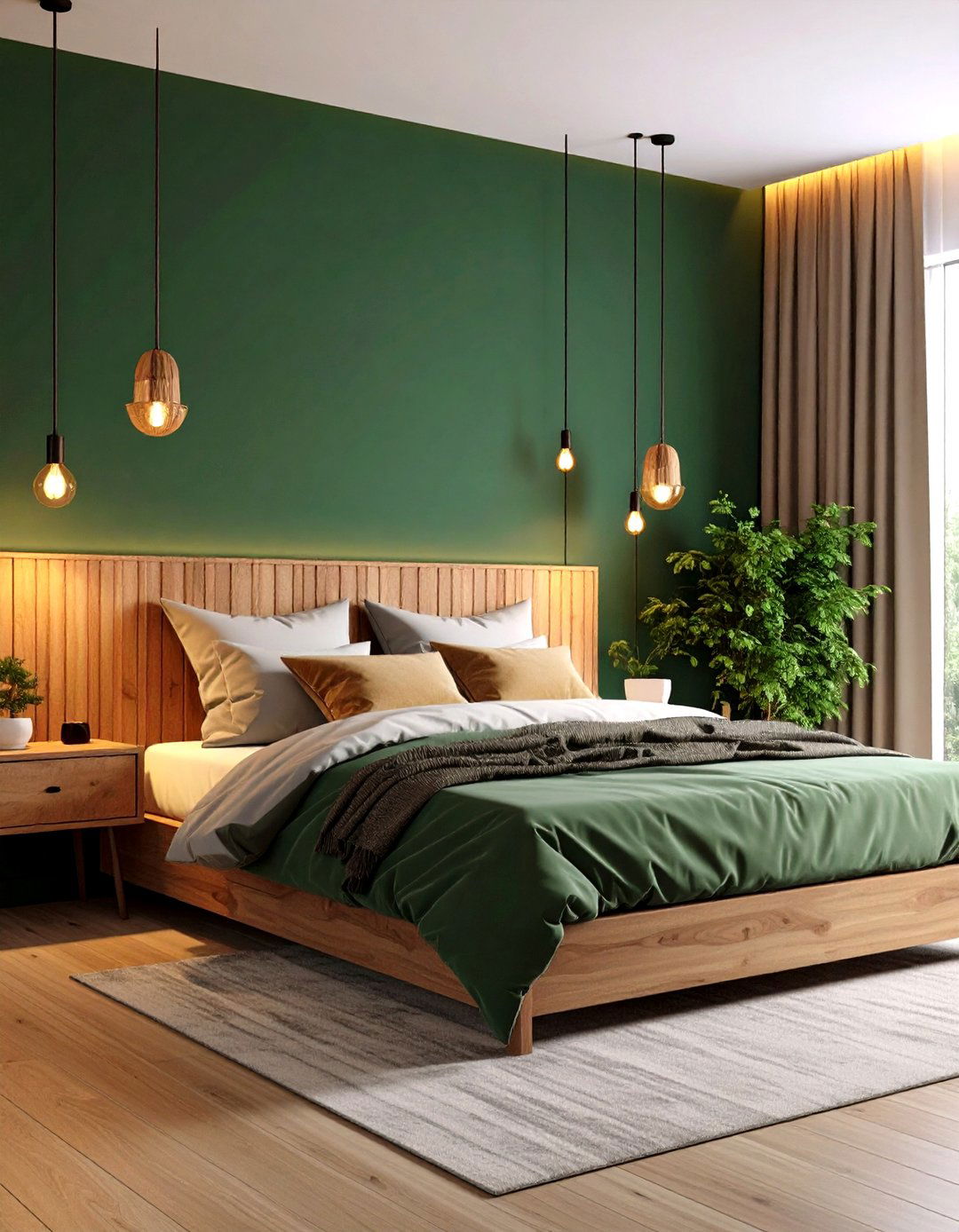
A saturated wall color—think spruce, fir, or black-pine—acts like the first row of towering trunks, grounding furniture and soft furnishings in a cohesive woodland palette. Matte eggshell finishes absorb glare, mimicking forest shade while accentuating natural light patterns that dance across the surface. Balance the depth with lighter trims or timber accents so the room stays airy, not cavern-like. Pairing these hues with warm LED bulbs (2 700–3 000 K) maintains an amber glow reminiscent of twilight through foliage, encouraging circadian relaxation.
2. Overhead Branch-Inspired Canopy
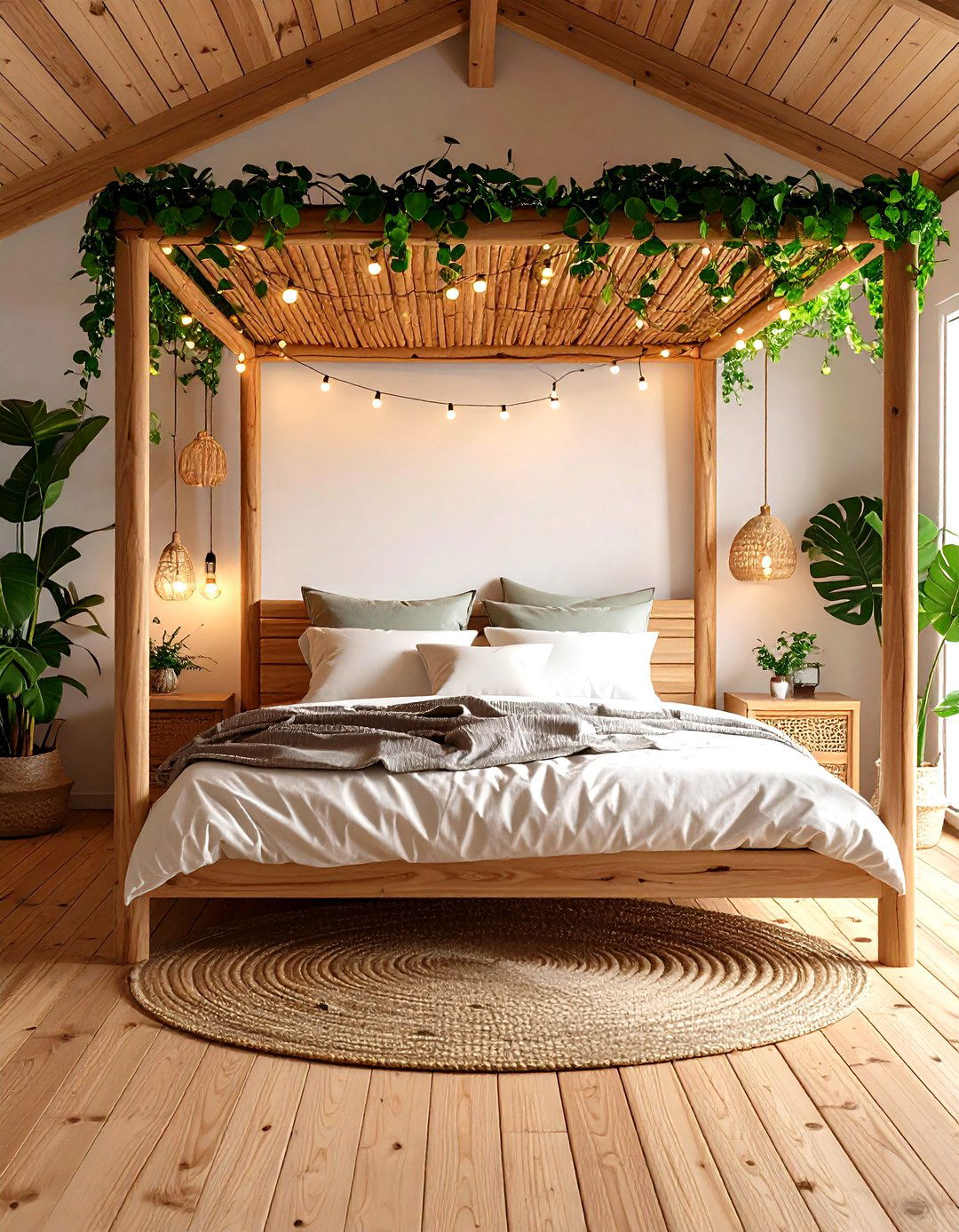
Hanging a lightweight branch framework or faux-wood trellis above the bed brings the romance of sleeping beneath boughs—no campground required. Secure sanded, sealed branches (or sculpted resin look-alikes) with ceiling joist anchors, then weave micro-fairy lights for a firefly sparkle. Opting for removable tension rods makes this upgrade renter-friendly while adding dramatic vertical dimension. A few trailing pothos vines or silk ivy strands soften the silhouette and reinforce the sheltering effect of a natural understory.
3. Tree-Motif Mural or Wallpaper
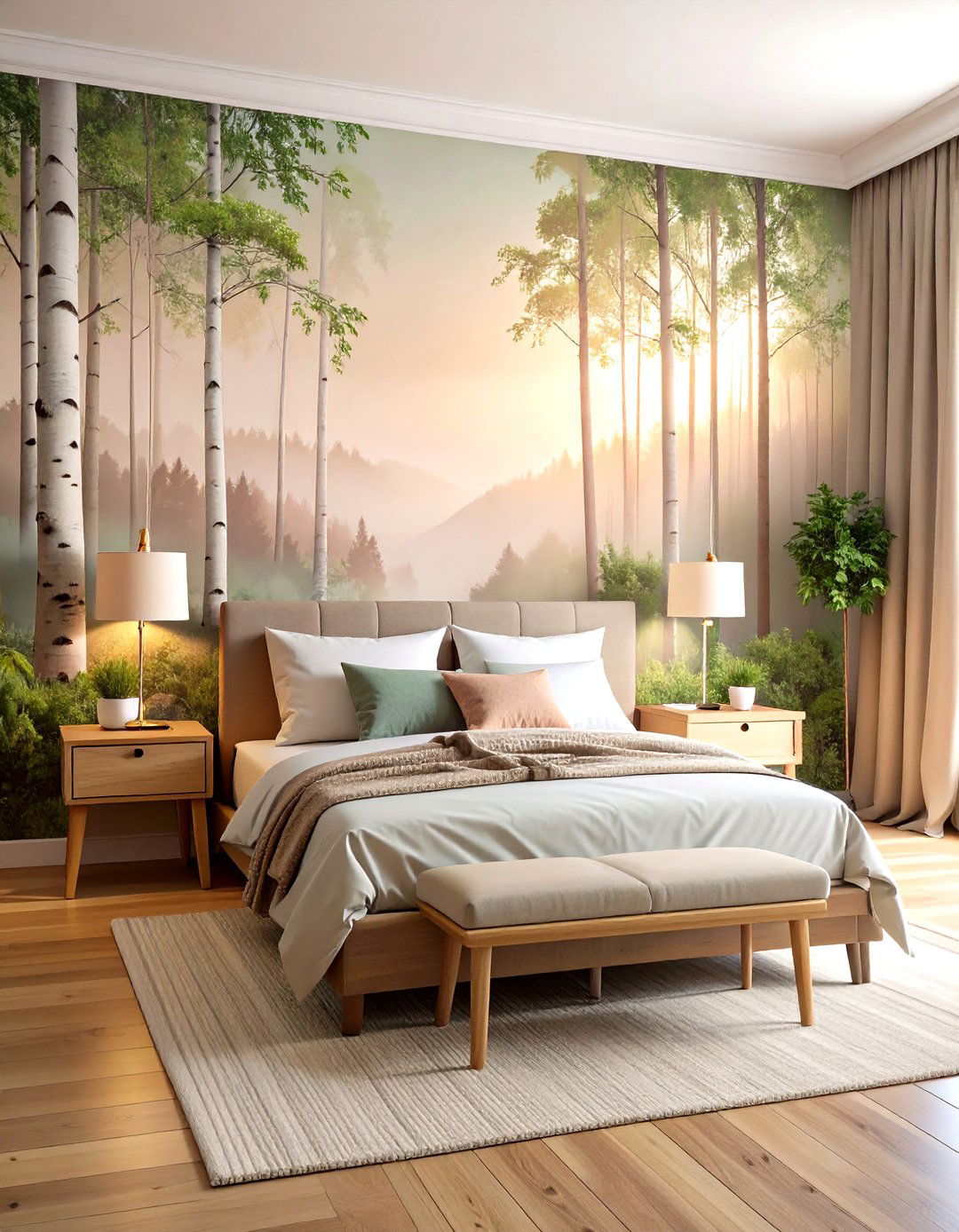
Wrapping one wall in a panoramic forest mural instantly expands perceived space, creating the illusion of depth and distant trunks fading into mist. Peel-and-stick formats make installation manageable, especially in apartments where paint restrictions apply. Look for designs with a subtle sunrise gradient—cooler greens low, warmer highlights high—to cue the eye upward like real canopy light. If full murals feel bold, panel-style wallpapers featuring delicate birch or cedar silhouettes deliver the same narrative in smaller doses.
4. Rough-Sawn or Live-Edge Furniture
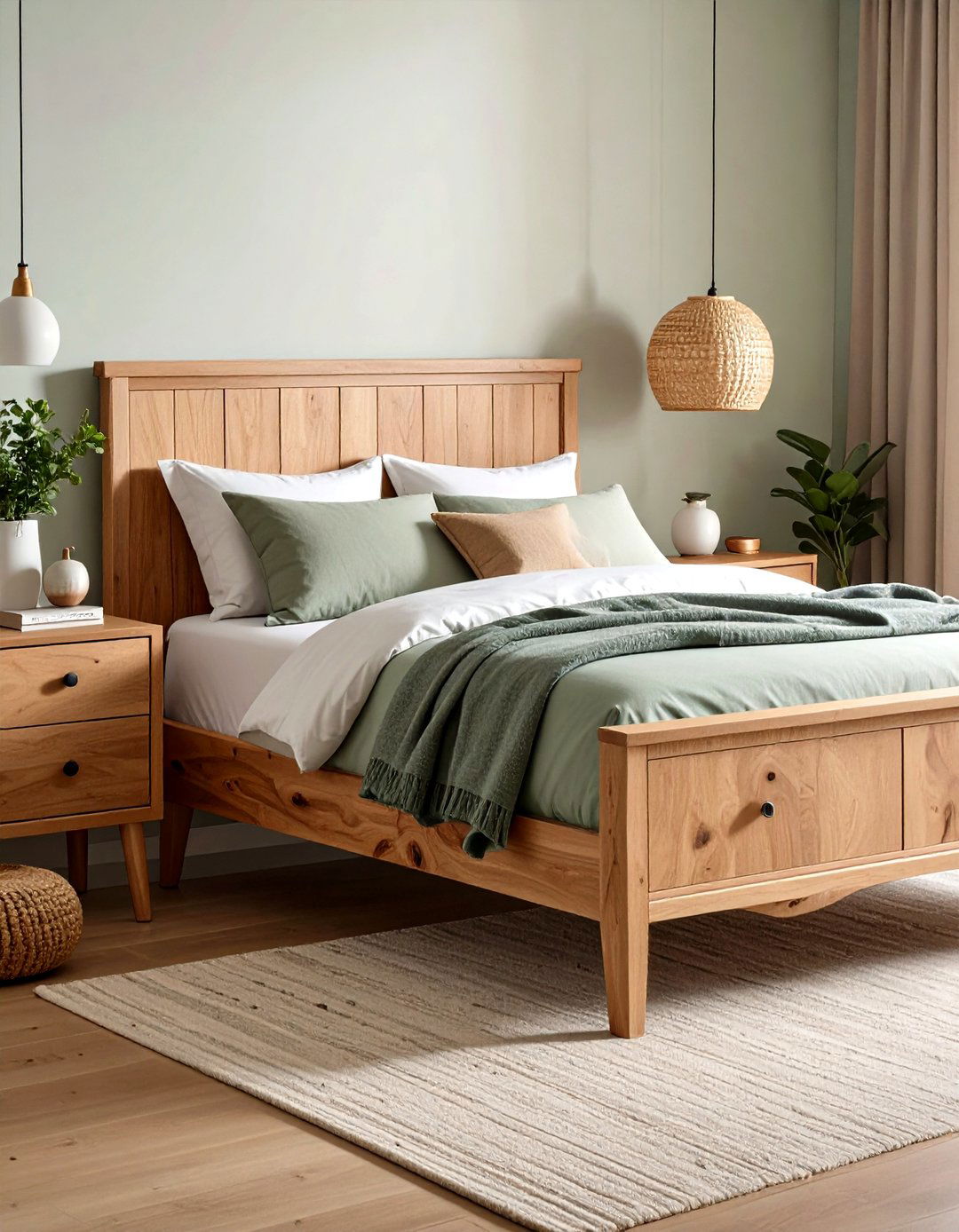
Swapping uniform veneer pieces for rough-sawn dressers, live-edge nightstands, or a reclaimed-oak bench introduces authentic forest texture. The irregular grain and visible knots reinforce organic character while staying timeless enough to survive trend cycles. Prioritize FSC-certified lumber to keep sustainability aligned with the biophilic ethos, and finish surfaces with low-VOC natural oils so the wood’s aroma subtly perfumes the air.
5. Moss-Toned Textiles and Throws
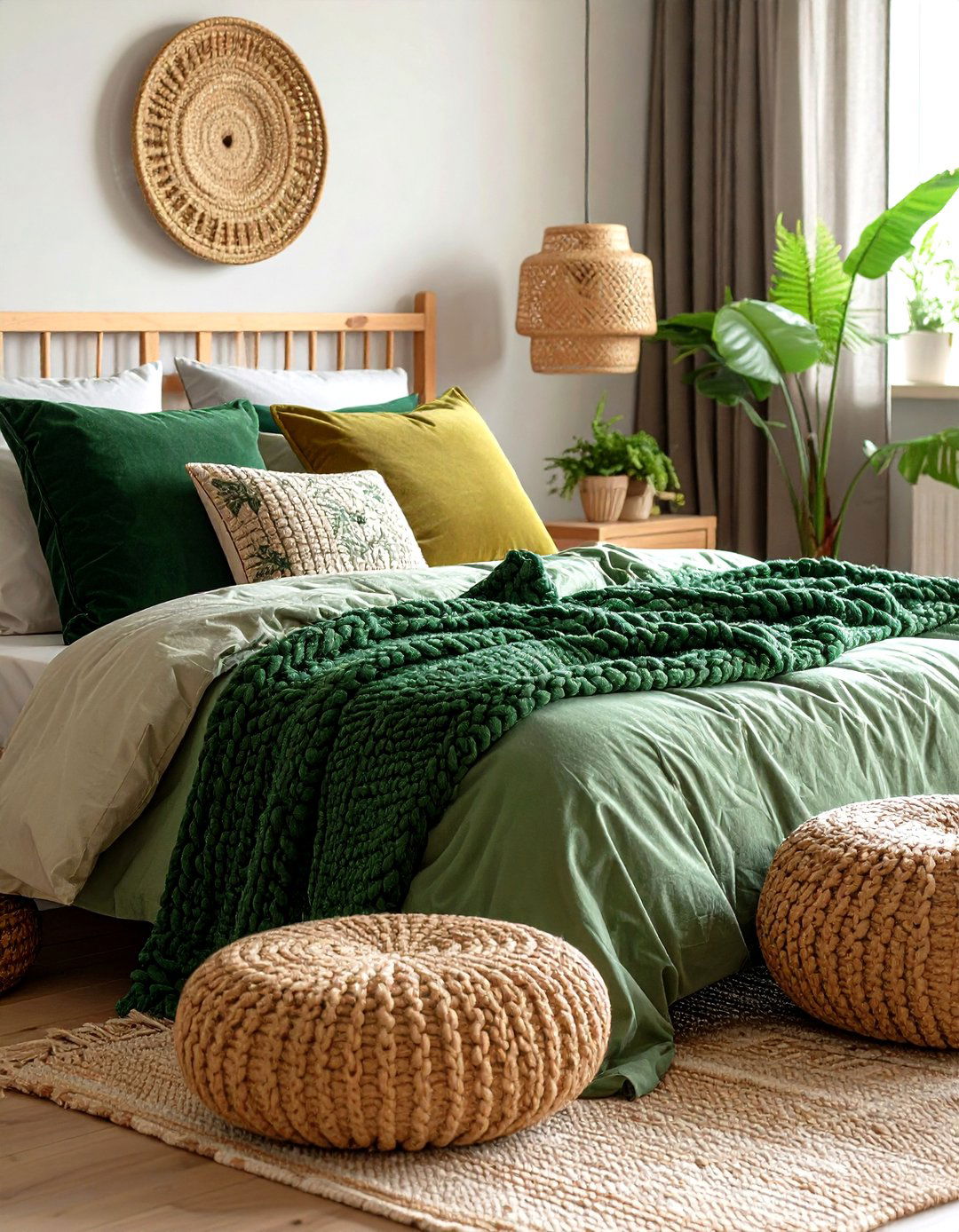
Layering plush throws, chunky knit cushions, and velvet accent pillows in moss, chartreuse, and fern establishes the “forest floor” without actual dirt. Complement tactile softness with an accent ottoman upholstered in boucle or felt to echo lichen-covered stones. Select fabrics made from linen or recycled cotton to maintain breathability in warmer months while adding cozy heft when temperatures drop.
6. Panoramic Wooded Headboard Scene
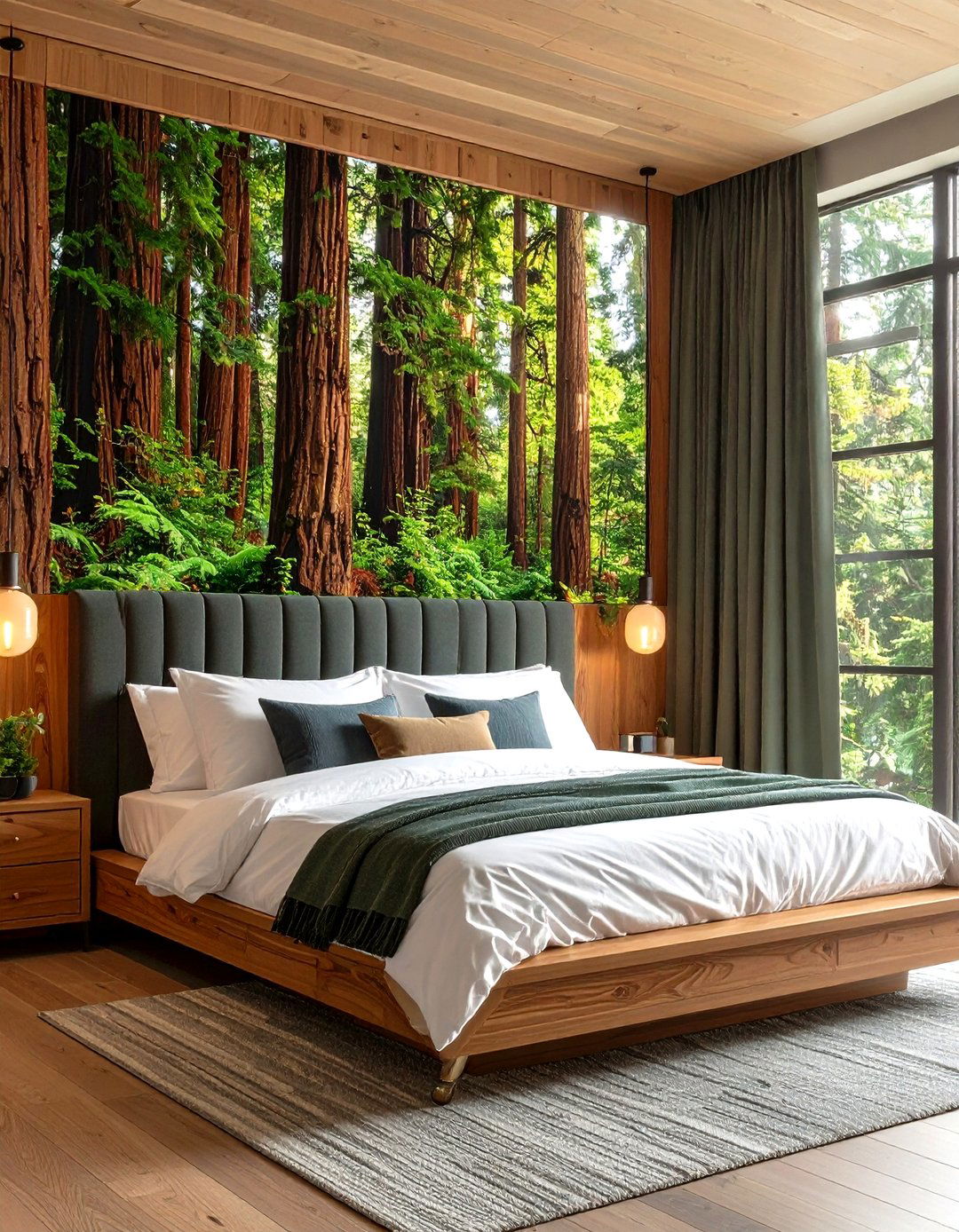
A full-width headboard printed with a high-resolution grove of redwoods or alpine pines creates a horizon line at eye level, making the bed feel cocooned between trunks. Fabric-wrapped panels reduce echo and double as an acoustic upgrade—perfect for city apartments craving quiet. Choose UV-stable inks to prevent fading and preserve the greens’ restorative intensity over years of sunlight exposure.
7. Dappled-Light Layering
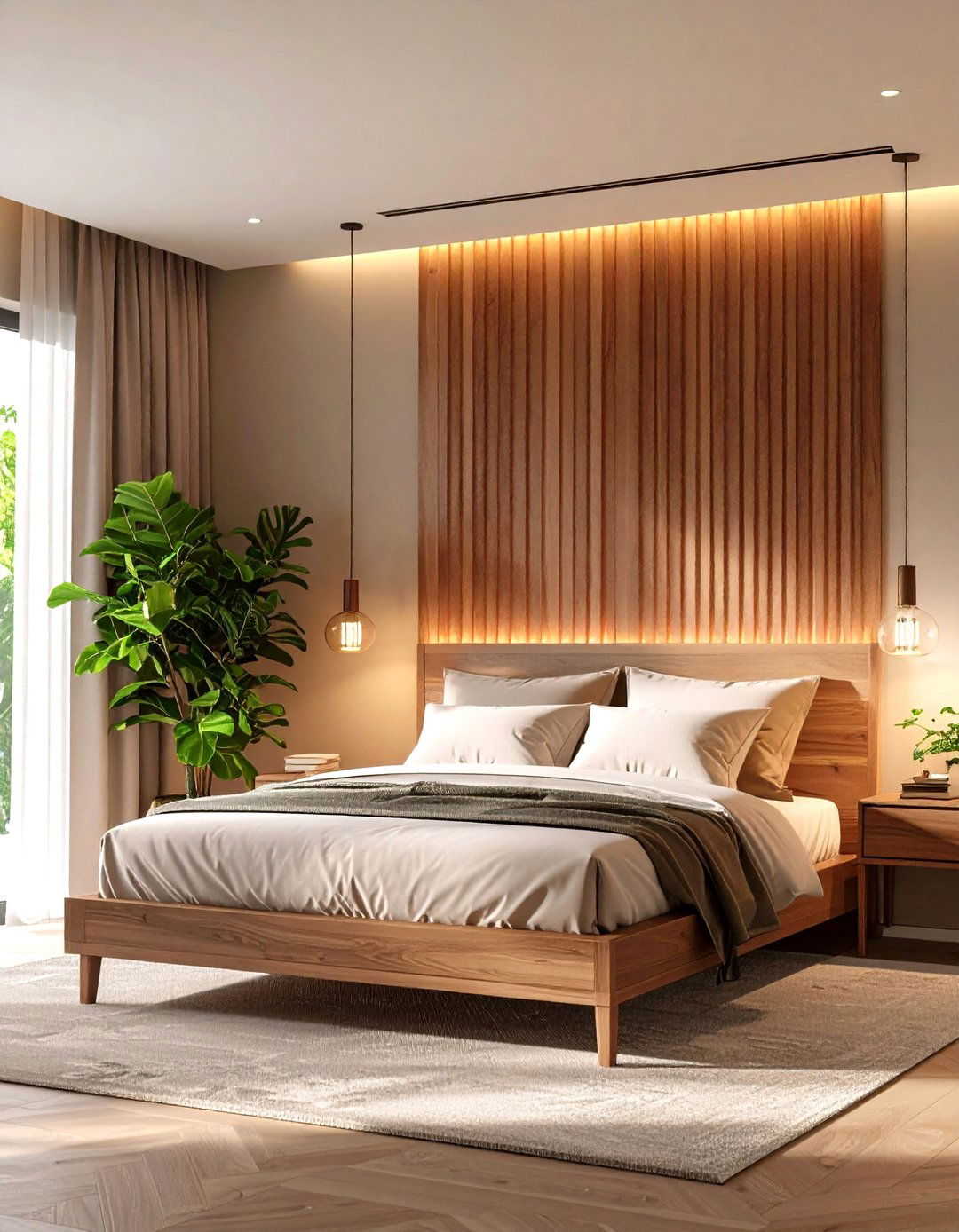
Combine adjustable recessed downlights with a dimmable pendant filtered through a slatted shade to reproduce shifting canopy light. A smart bulb programmed to transition from cool dawn white to warm dusk amber strengthens circadian cues, enhancing sleep quality. Position a small, warm-tone spotlight behind a leafy plant so shadows dance across walls like wind-stirred foliage.
8. Earth-Draped, Floor-Skimming Curtains
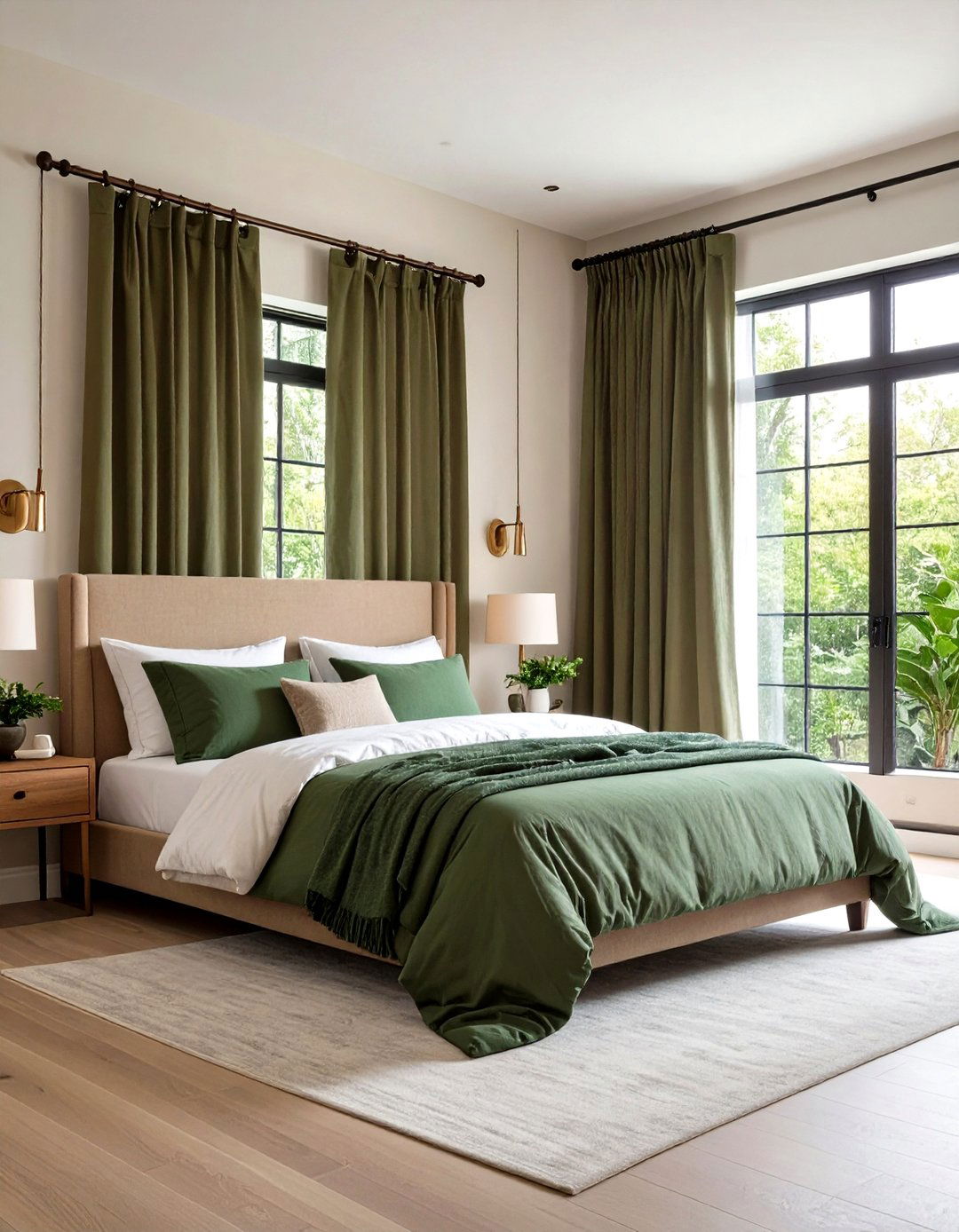
Heavy linen or cotton-canvas drapes in muted olive, bark, or clay envelop windows, blocking harsh glare while framing outdoor views like living artwork. Hem panels to puddle slightly on the floor, echoing forest underbrush. Lining curtains with thermal fabric moderates bedroom temperature, mirroring the steady climate under tree cover and trimming energy bills year-round.
9. Living Greenery and Terrariums

Tall, shade-tolerant species such as philodendron, monstera, or parlor palm thrive in bedroom humidity and mimic stratified forest layers. Arrange plants at varied heights—floor planters, shelf terrariums, and hanging kokedama—to create a micro-ecosystem that purifies air and introduces gentle movement. Automated drip pockets along one wall form a DIY living mural, turning bare plaster into a lush green canvas.
10. Log-Frame or Twig-Detail Bed
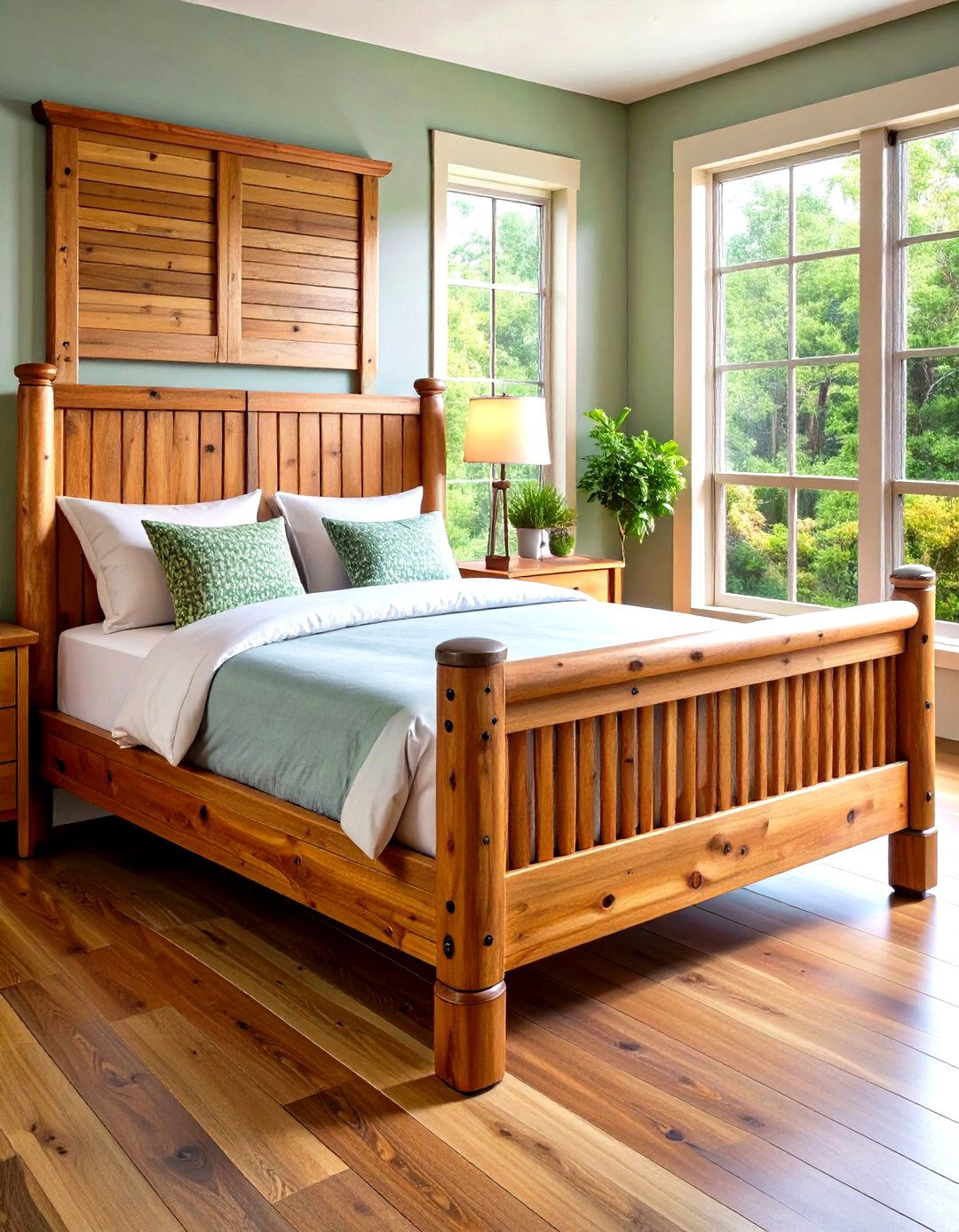
A bed crafted from polished cedar logs or adorned with twig inlays channels rustic cabin vibes while remaining structurally solid. If full log construction feels heavy, attach detachable bark-textured headboard slats to an existing metal frame for a lighter, budget-friendly upgrade. Seal all timber with clear matte polyurethane to prevent splinters yet preserve tactile bark ridges.
11. Pebble-Mimic Rug Underfoot
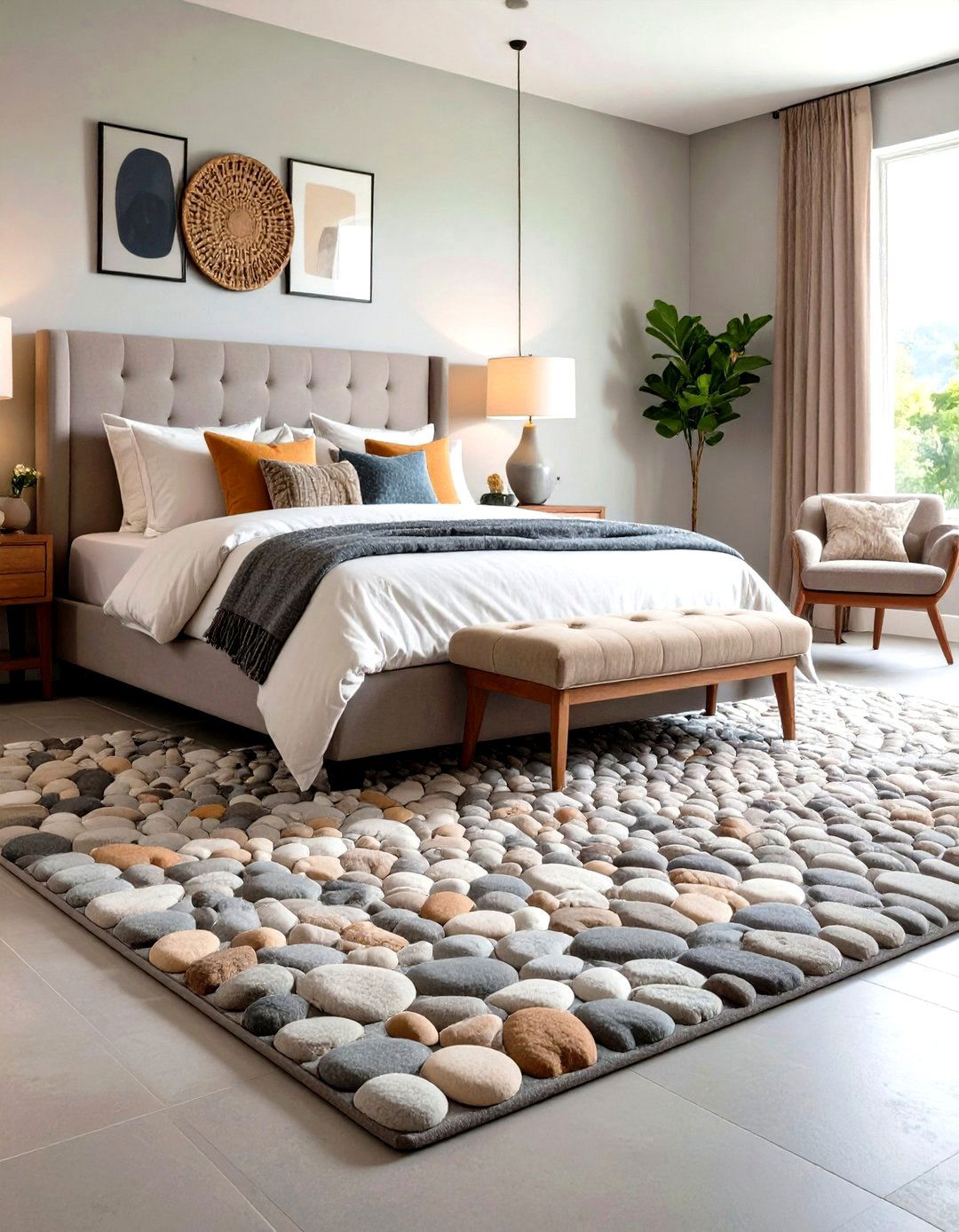
A felted-wool pebble rug scattered beside the bed massages feet like a creek bank each morning, adding sensory grounding to wake-up routines. Opt for water-repellent backing so accidental spills don’t soak in, and place a non-slip pad underneath to keep stones “in place.” Neutral grays and muted taupes blend seamlessly with deep greens and wood tones, keeping the palette cohesive.
12. Pine-Infused Aromatherapy
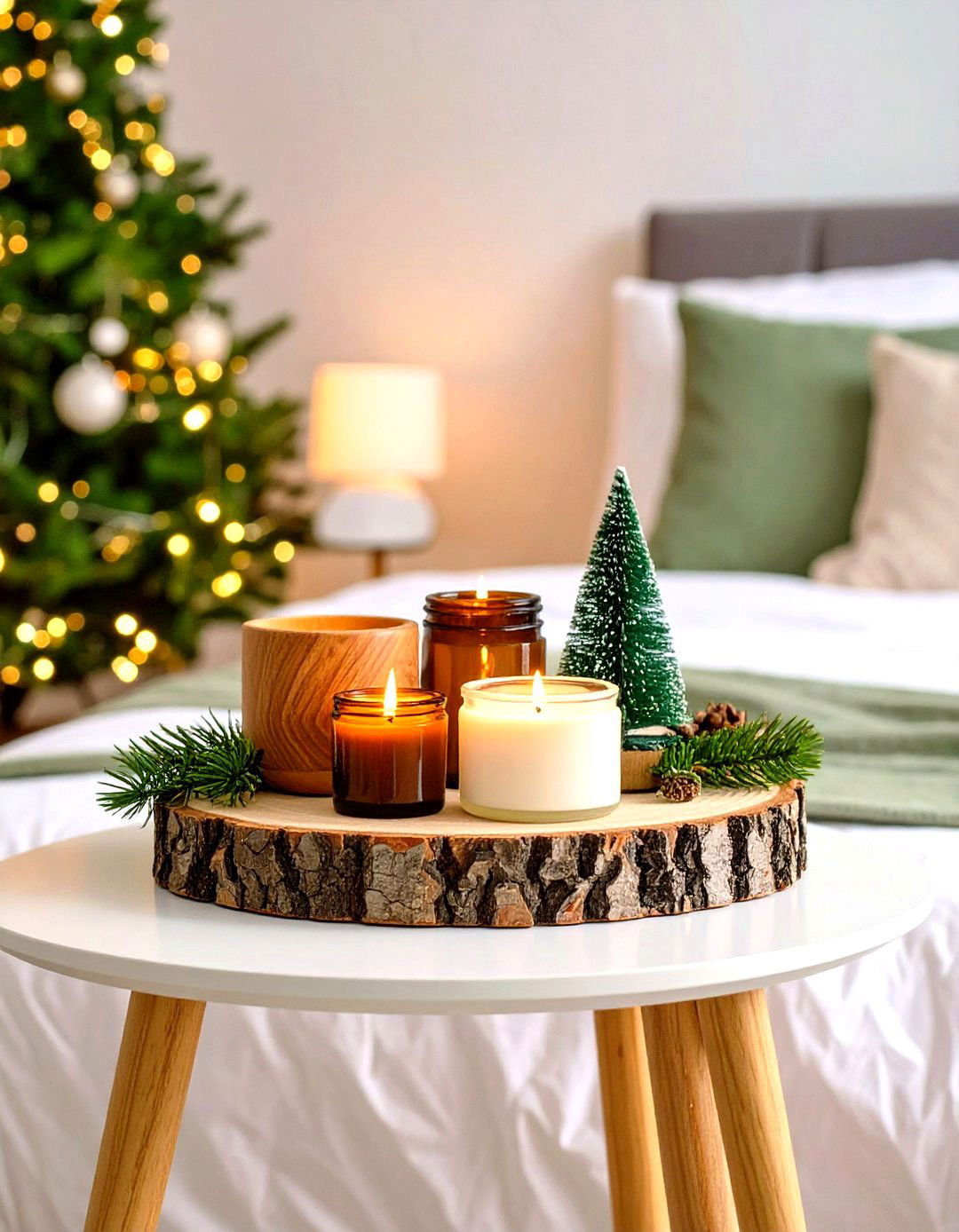
Lighting a three-wick pine-needle candle or diffusing fir essential oil instantly transports the senses to high-altitude trails. For continuous fragrance minus open flame, switch to soy-based melts in a plug-in warmer or reed diffusers set on a log slice. The crisp resinous aroma pairs well with cedar closets, preventing mustiness while reinforcing the room’s woodland character.
13. Forest Soundscape for Deeper Sleep

A compact sound machine loaded with rustling leaves, distant waterfall, and songbird tracks adds an auditory forest layer, masking city noise and guiding the mind toward restorative REM cycles. Many models remember last-used settings, so a single button press each night recreates the glade. Keep volume low—around 40 dB—to complement, not dominate, natural bedroom quiet.
14. Layered Plaid, Linen, and Flannel Bedding
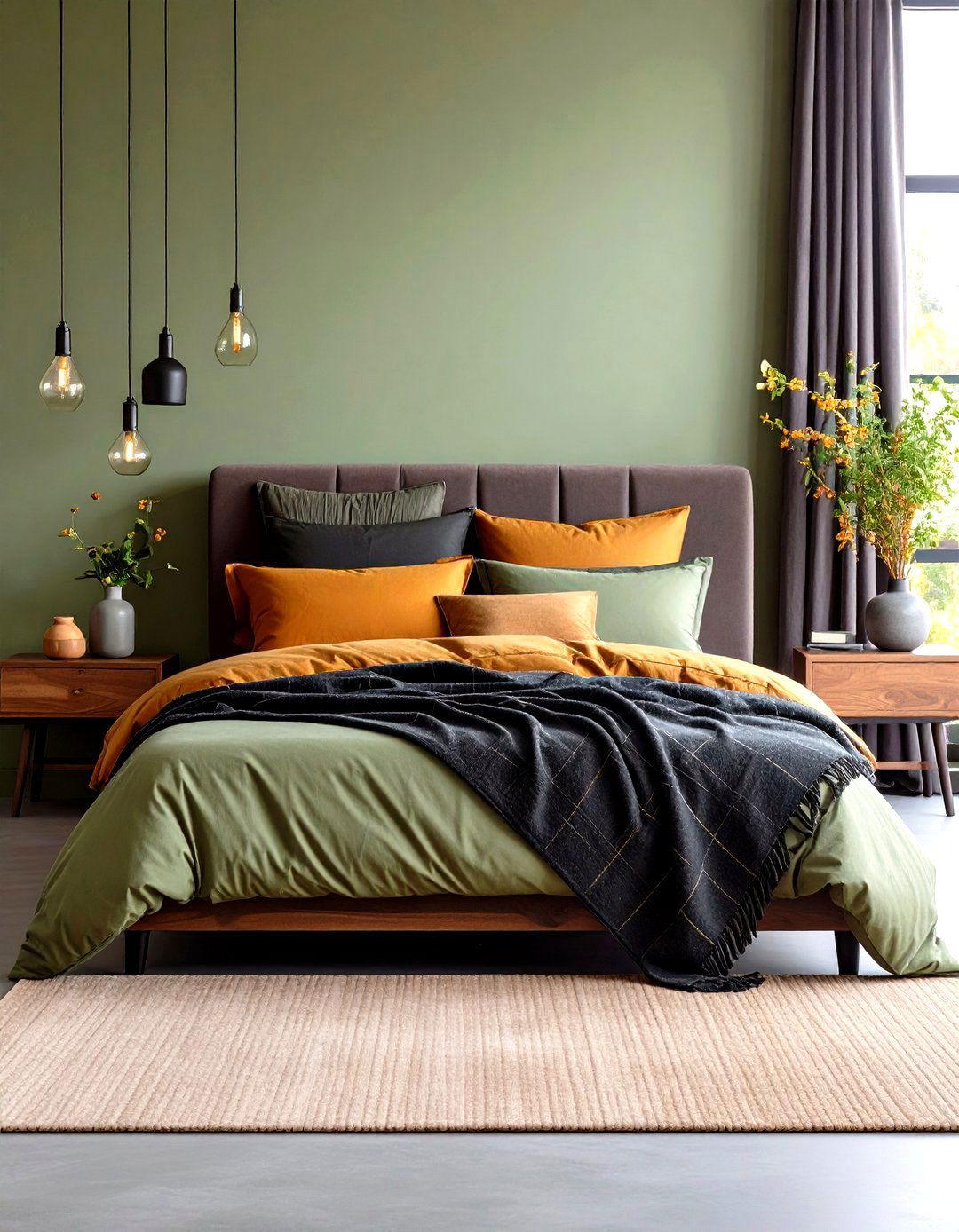
Alternate tactile weaves—crisp linen sheets for summer, brushed flannel duvet covers for winter—to reflect seasonal forest shifts. A subtle plaid echoing picnic blankets hints at woodland camping nostalgia without veering kitsch. Stick to an earth-tone palette—sage, charcoal, umber—so pattern mixing remains sophisticated and cohesive with wall colors and wood grains.
15. Upcycled Forest Finds as Décor
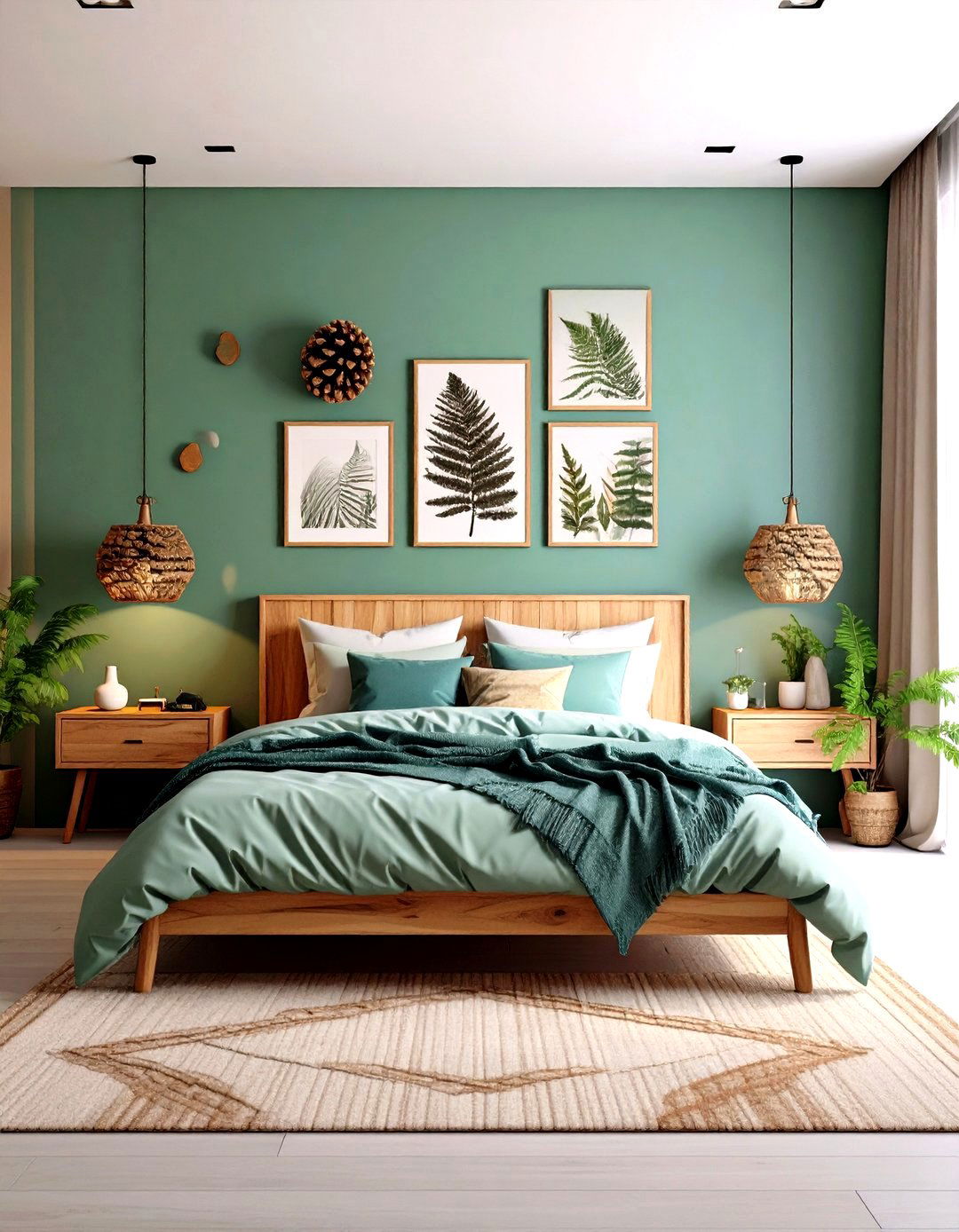
Showcase gathered pinecones, driftwood, or pressed fern fronds in shadow boxes for authentic, low-cost wall art. Treat raw pieces with clear matte sealant to keep insects at bay and fasten heavy items with concealed French cleats for safety. This hand-foraged décor personalizes the space and reminds occupants of actual woodland adventures.
16. Daylight-Maximizing Windows or Faux Skylight
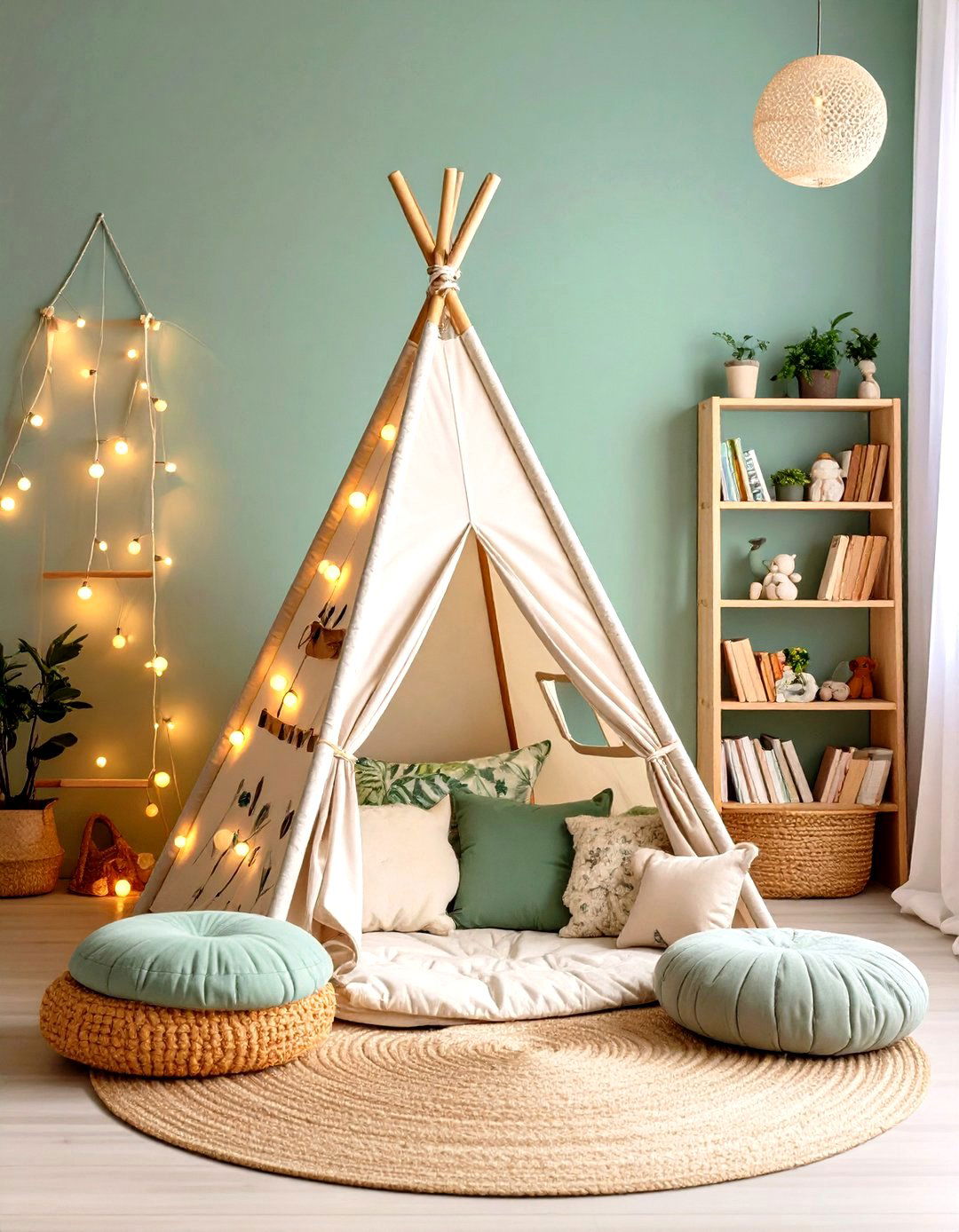
If architecture permits, widen trim and paint sills bright white to bounce daylight deeper into the room, enhancing vitamin-D exposure. In basement bedrooms, install an edge-lit LED panel programmed to mimic sunrise, gradually brightening from soft amber to cool noon white, supporting circadian alignment even without real sun.
17. Child-Friendly Forest Adventure Nook
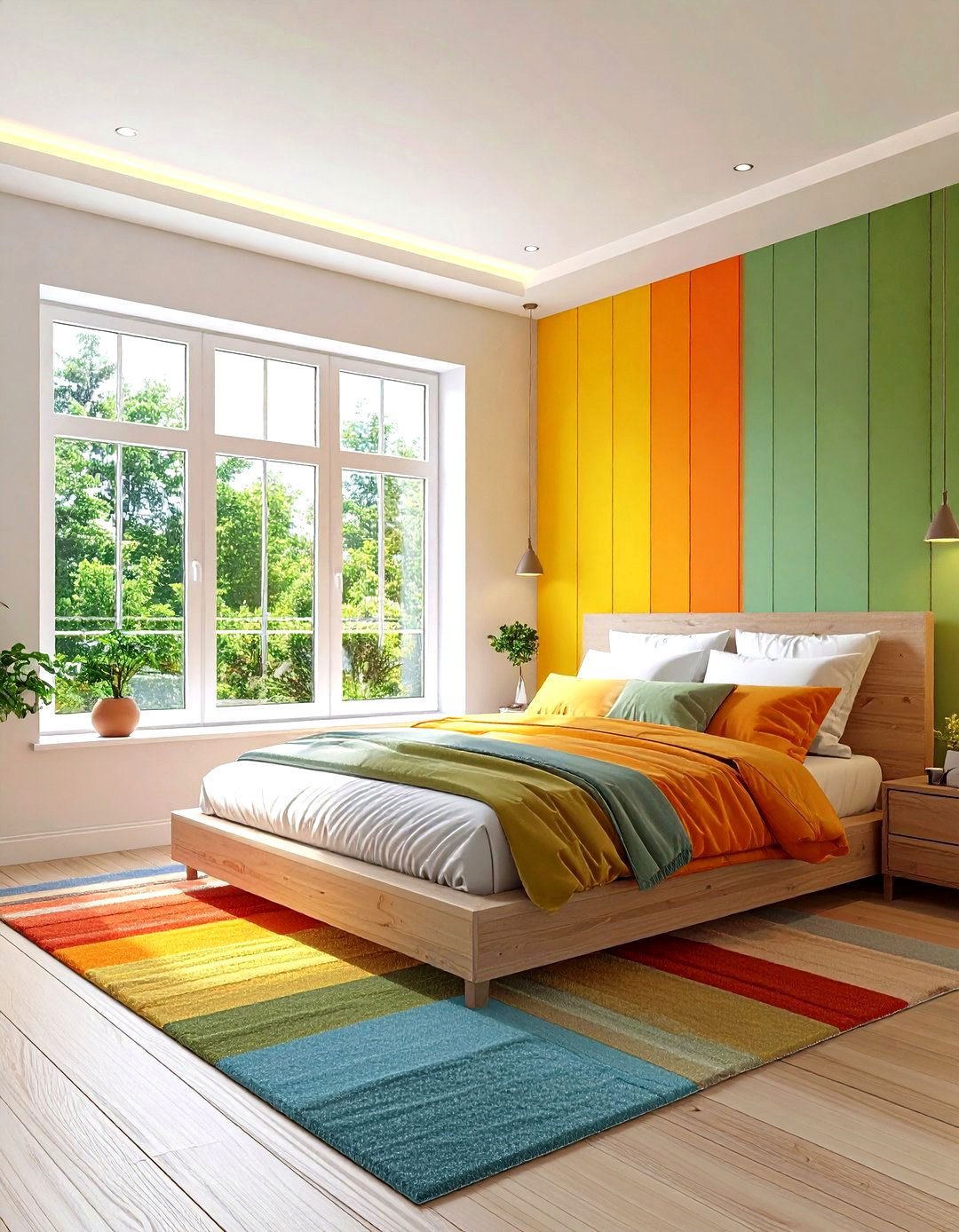
Transform a corner with a leaf-pattern teepee, plush animal cushions, and wall-mounted rope ladder to encourage imaginative play. Fairy-light strands at child-safe low voltage add magic after dark, doubling as a gentle night-light. A low bookcase stocked with nature tales fosters early appreciation for outdoor life while keeping clutter contained.
18. Living Moss or Plant Frame Accent
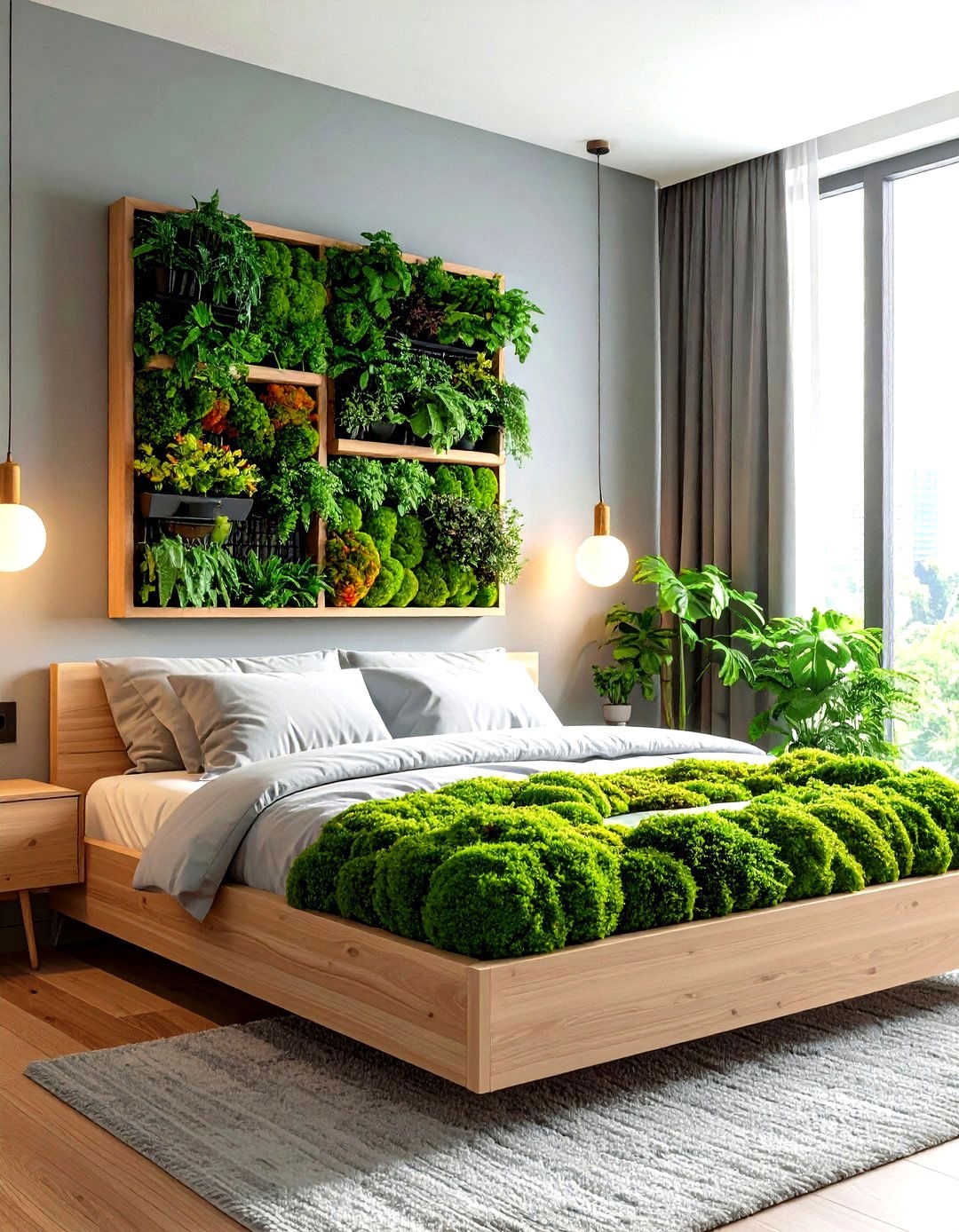
A framed moss art piece anchors a gallery wall, introducing verdant color even in low light because preserved moss requires no maintenance. For higher commitment, modular pocket planters create a vertical herb or fern garden, humidifying air and emitting faint earthy scents that reinforce the forest aura.
19. Starry Night Canopy Lighting
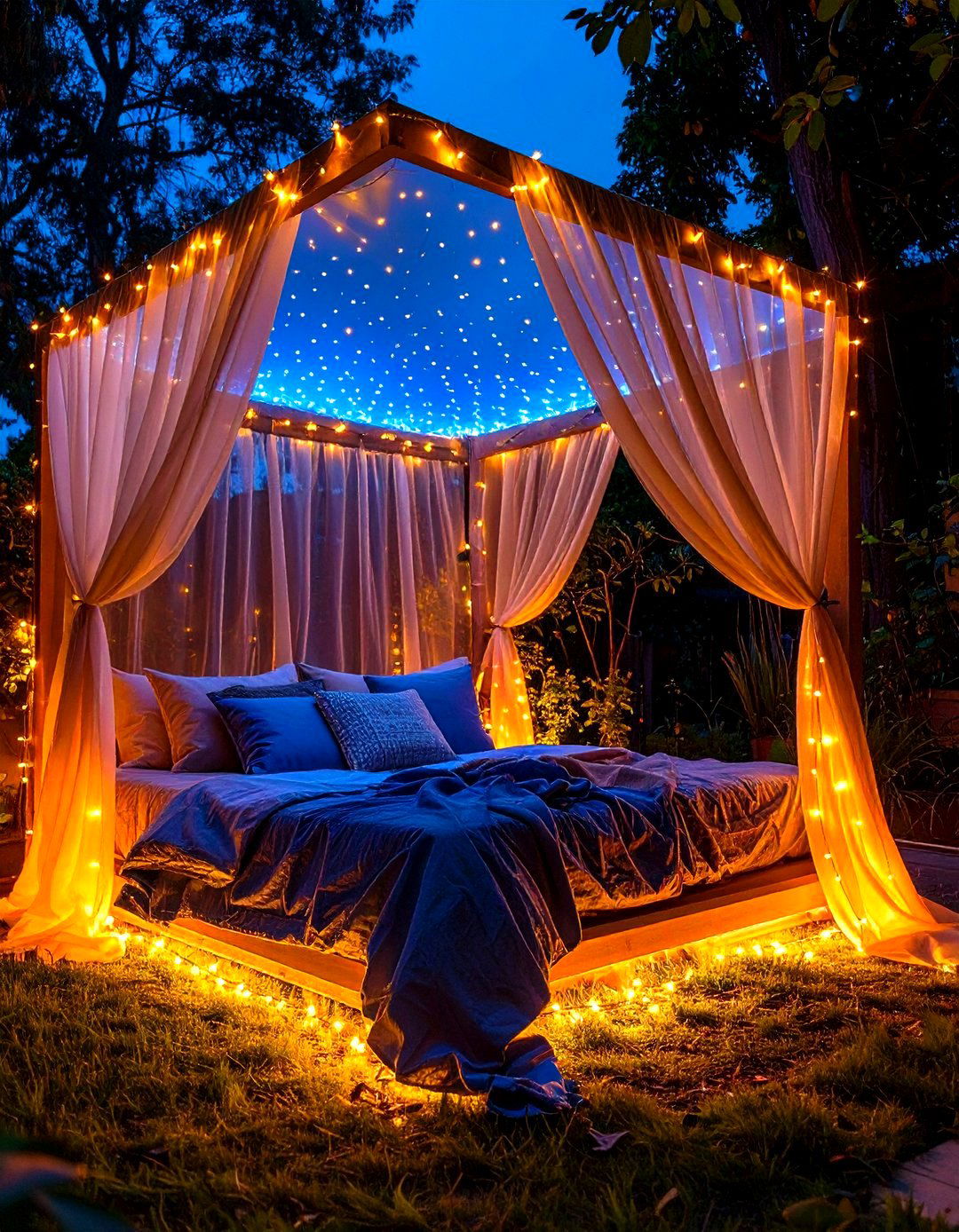
Drape micro-LED “star nets” beneath fabric canopy panels or suspend glow-in-the-dark stars that absorb daylight, emitting a soft celestial shimmer after lights-out. Pair warm white LEDs around bedposts to mimic campfire embers, balancing cool starlight with cozy warmth. Set both to auto-off after an hour to conserve energy while preserving serenity.
20. Seasonal Swaps for Year-Round Forest Feel
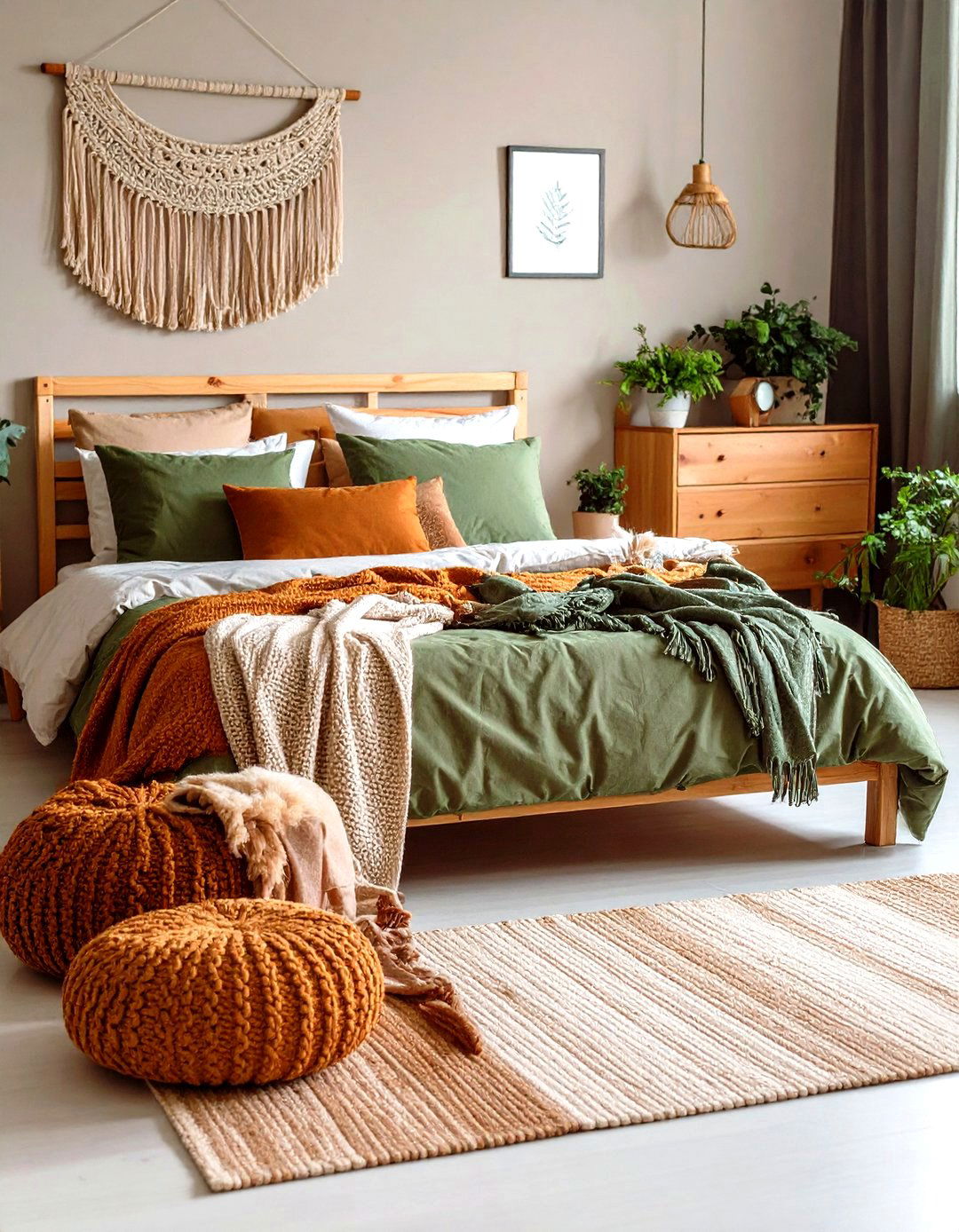
Rotate décor elements as the woodland itself changes: exchange heavy faux-fur throws for breezy gauze in spring, trade pine scents for fresh rain diffuser oils in summer, and layer cinnamon-bark accents come autumn. Keeping core pieces—wall color, wood furniture, and greenery—consistent lets accessories evolve seamlessly, ensuring your forest bedroom stays evergreen yet never static.
Conclusion:
Infusing a bedroom with forest-inspired elements—rich green palettes, textured natural materials, multisensory cues, and adaptive lighting—creates a refuge where the mind unwinds as effortlessly as beneath a real canopy. By layering just a few of these strategies, anyone can capture the serenity, freshness, and quiet wonder of woodland mornings, transforming sleep space into a daily retreat.


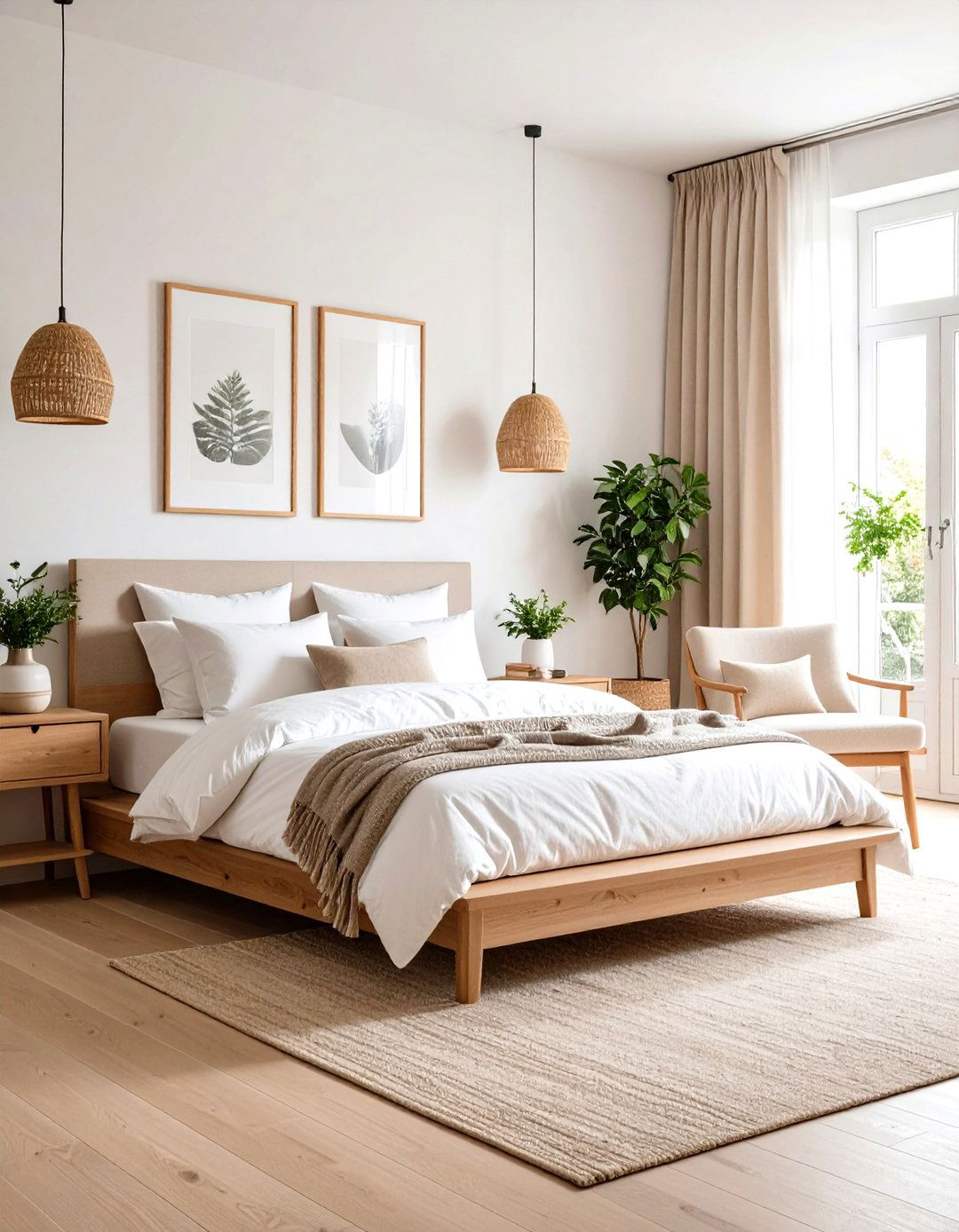
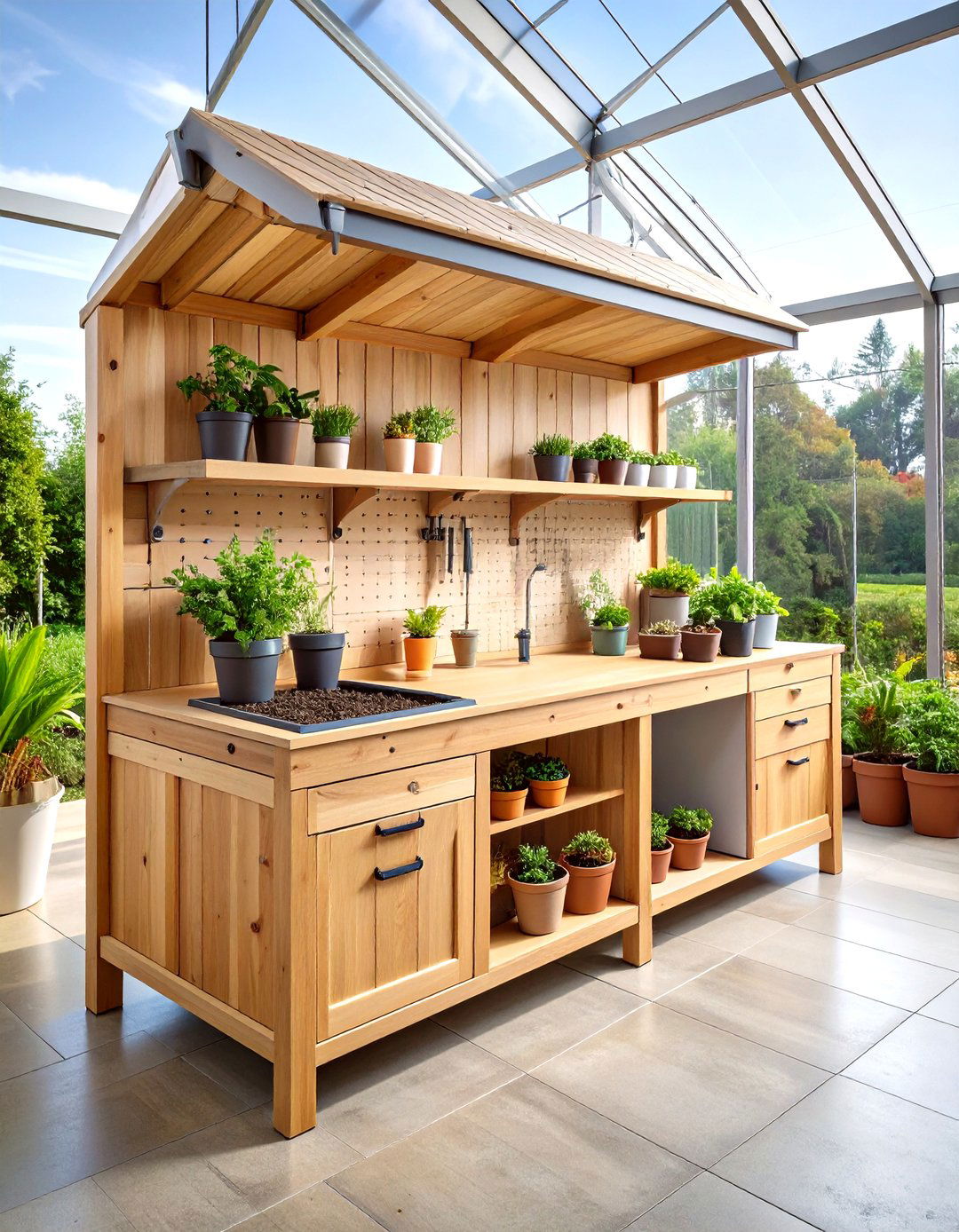


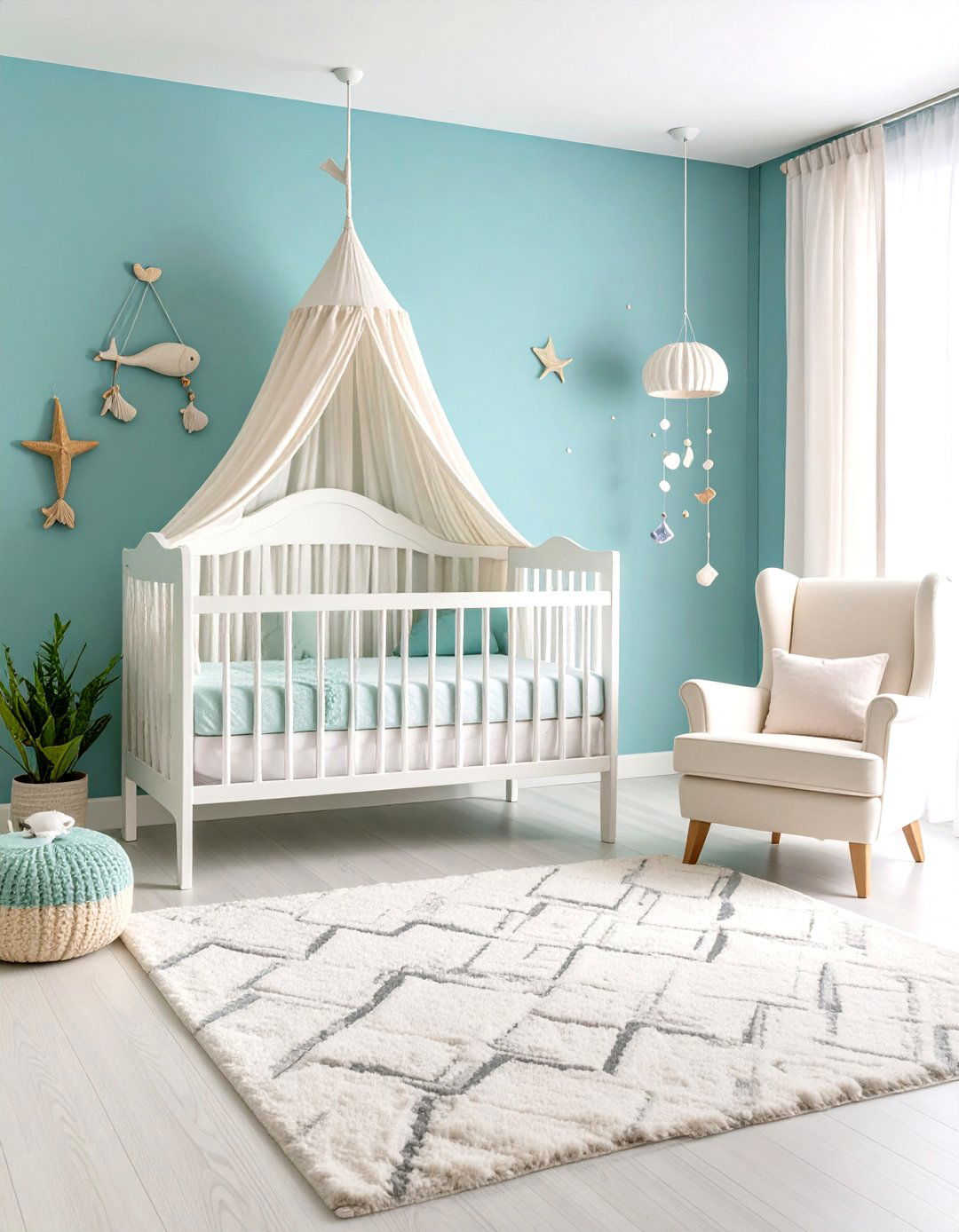
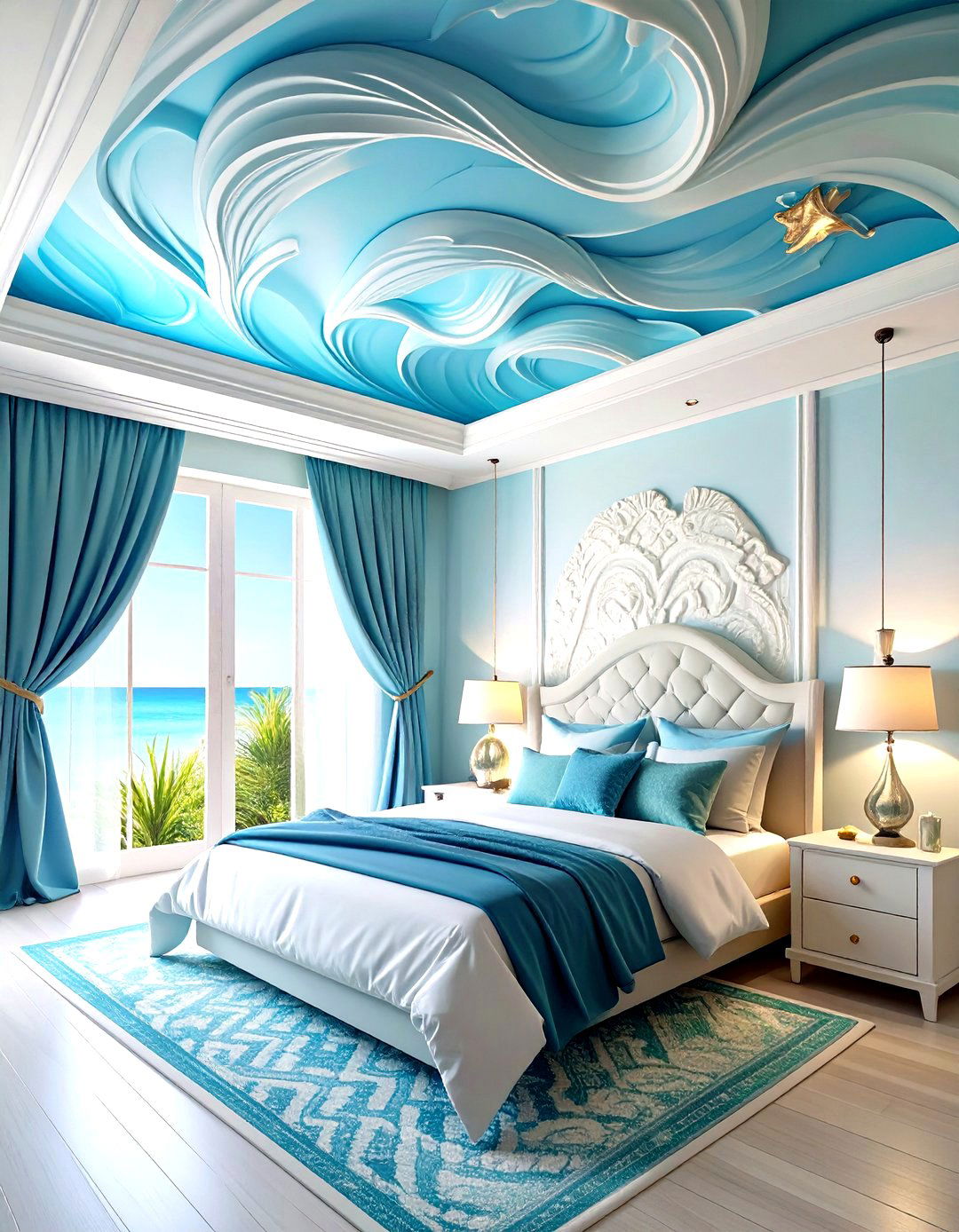
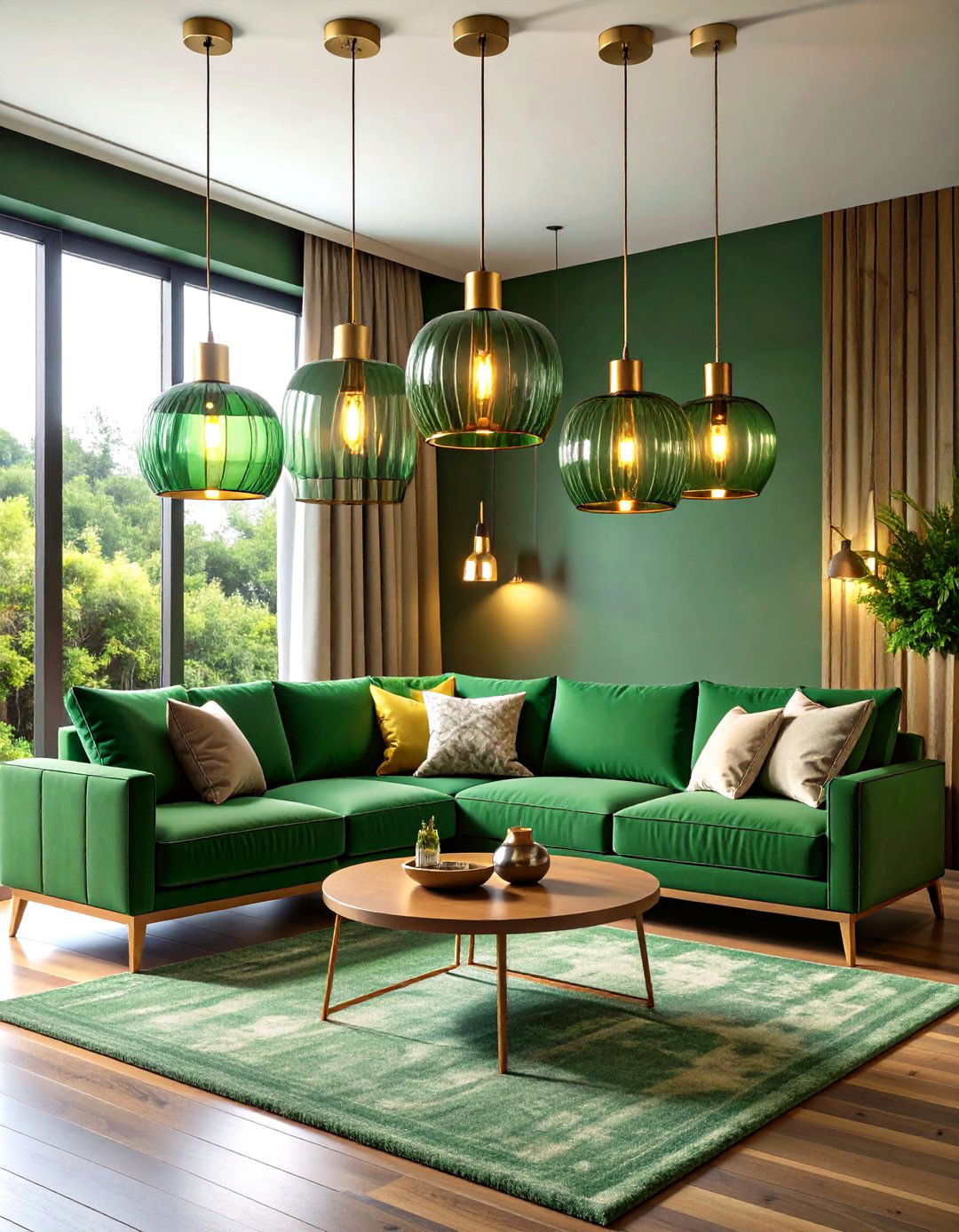
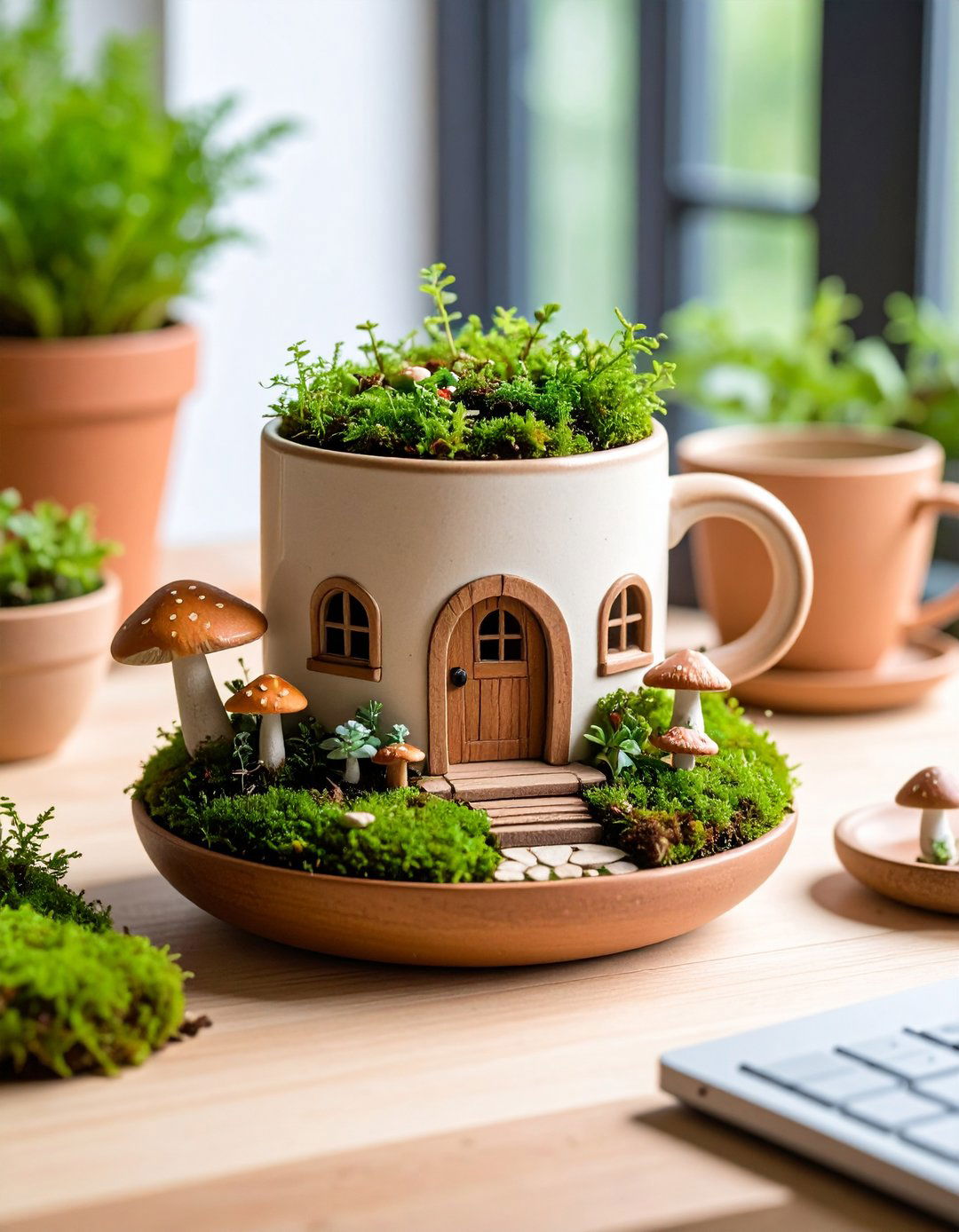
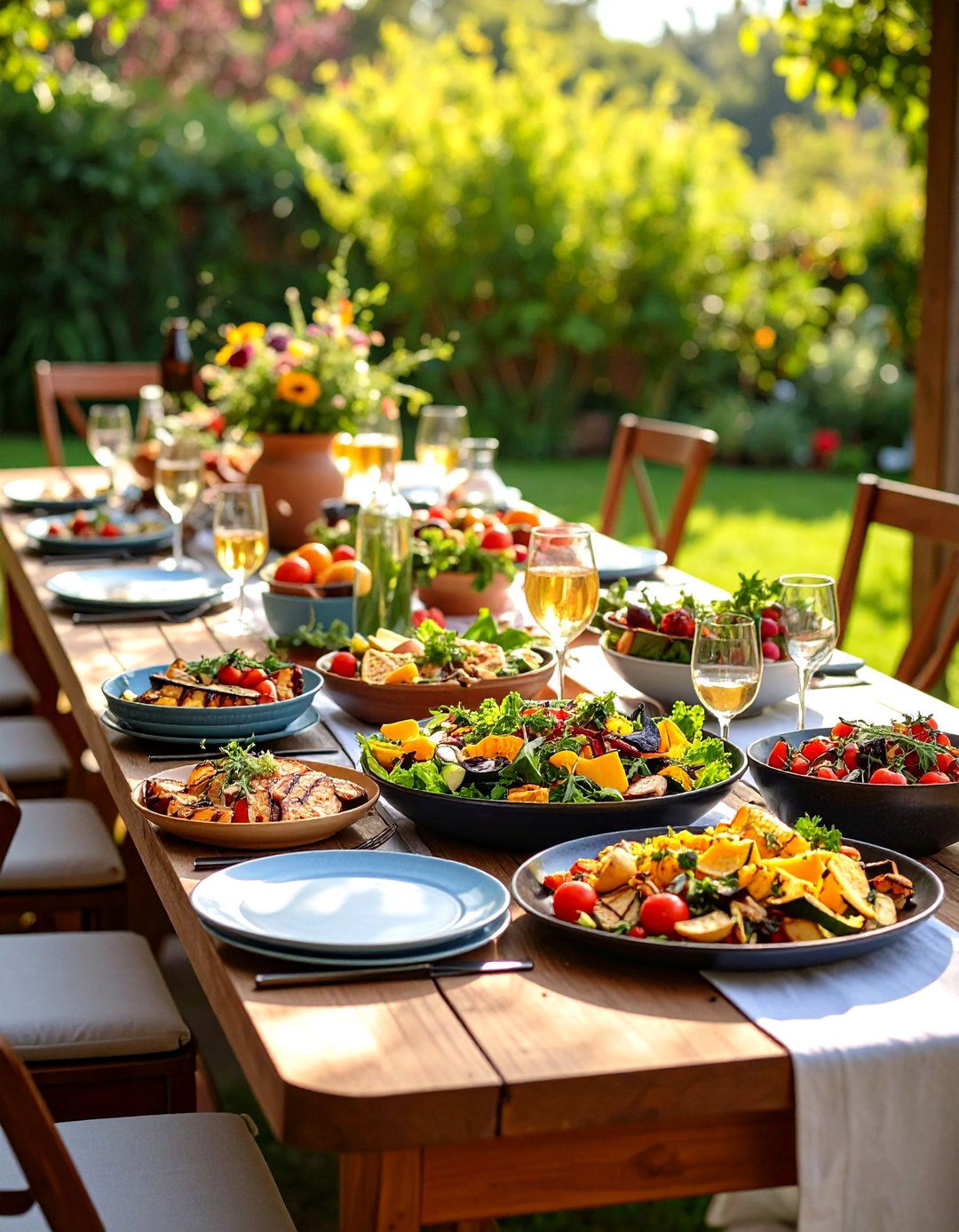
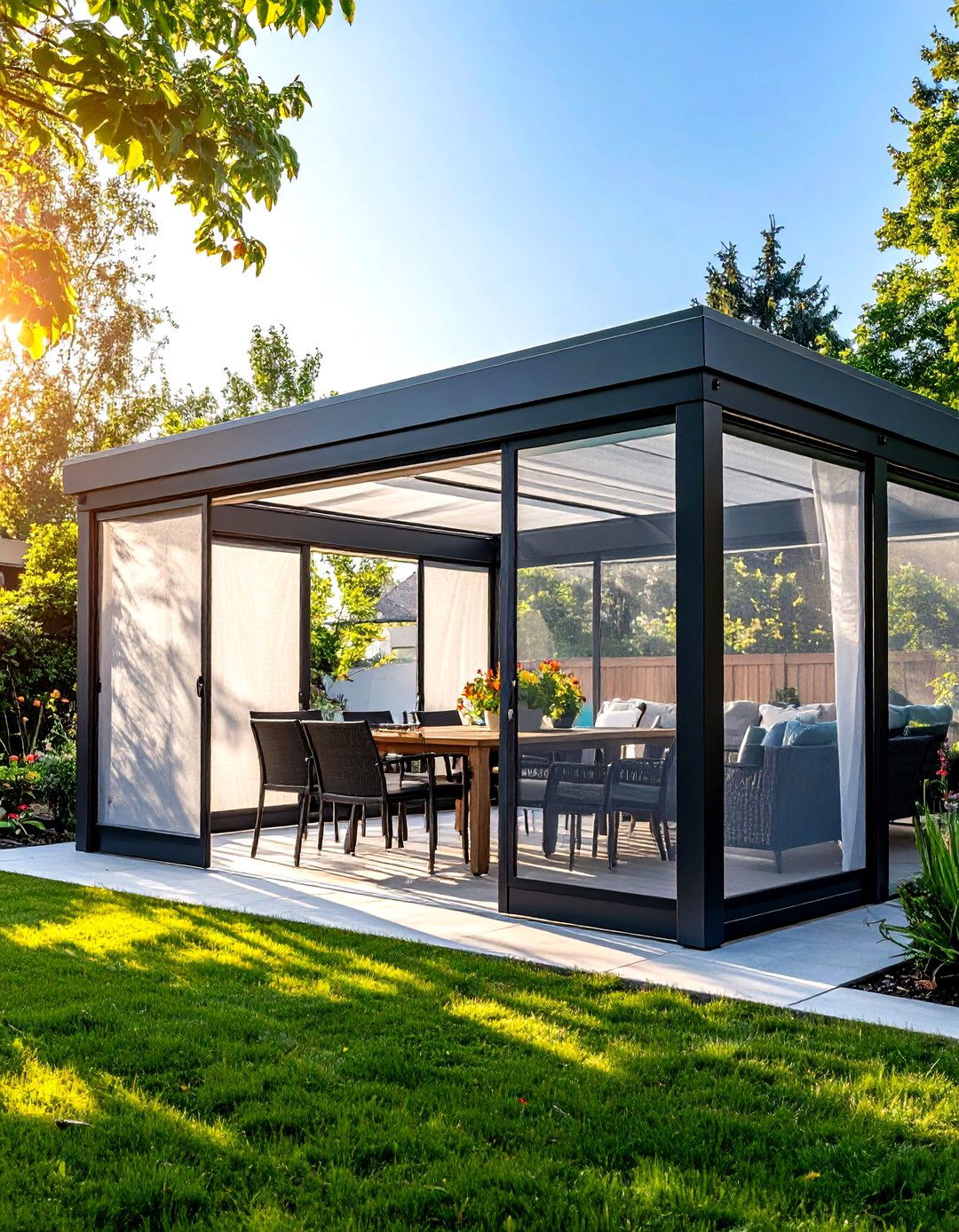
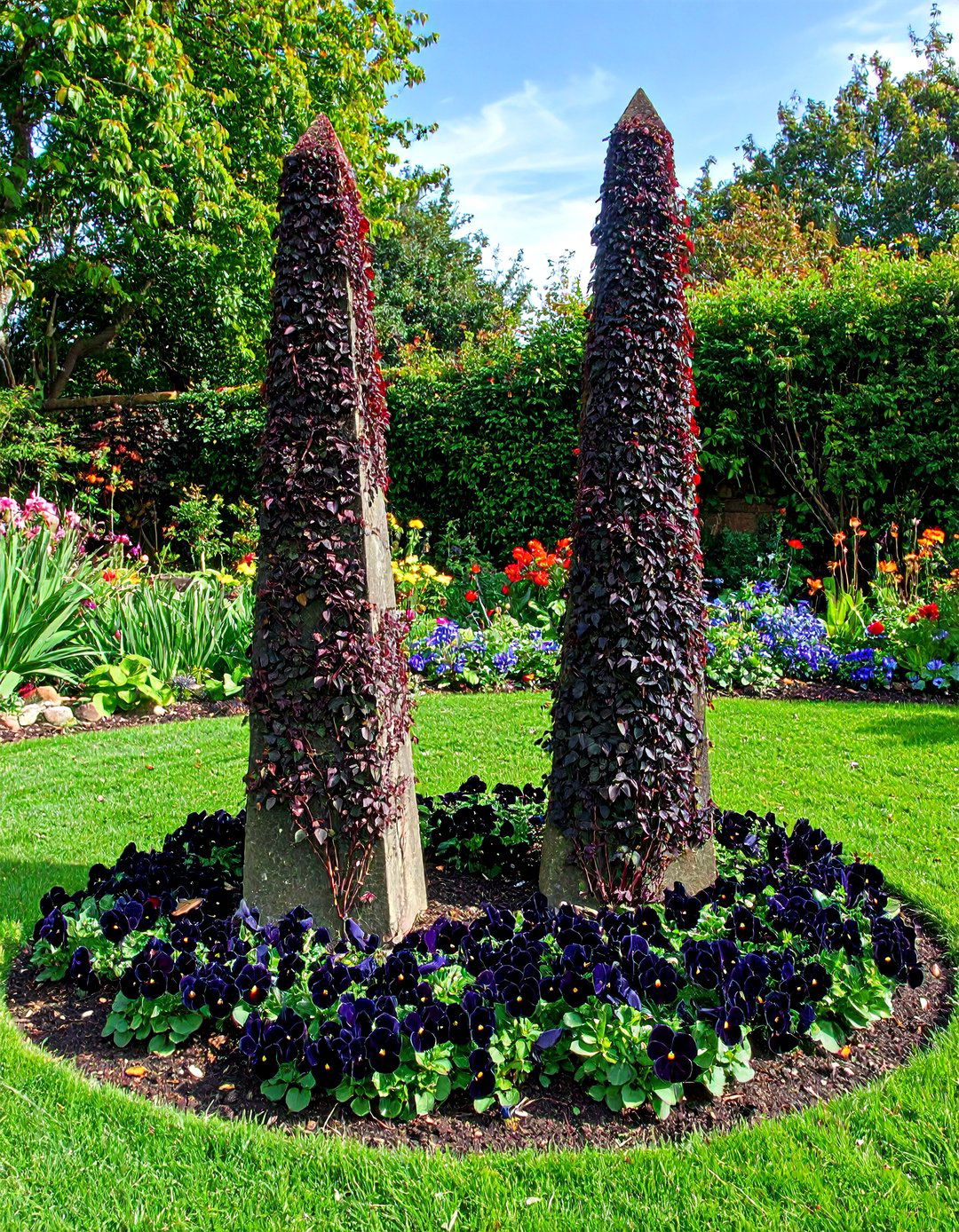
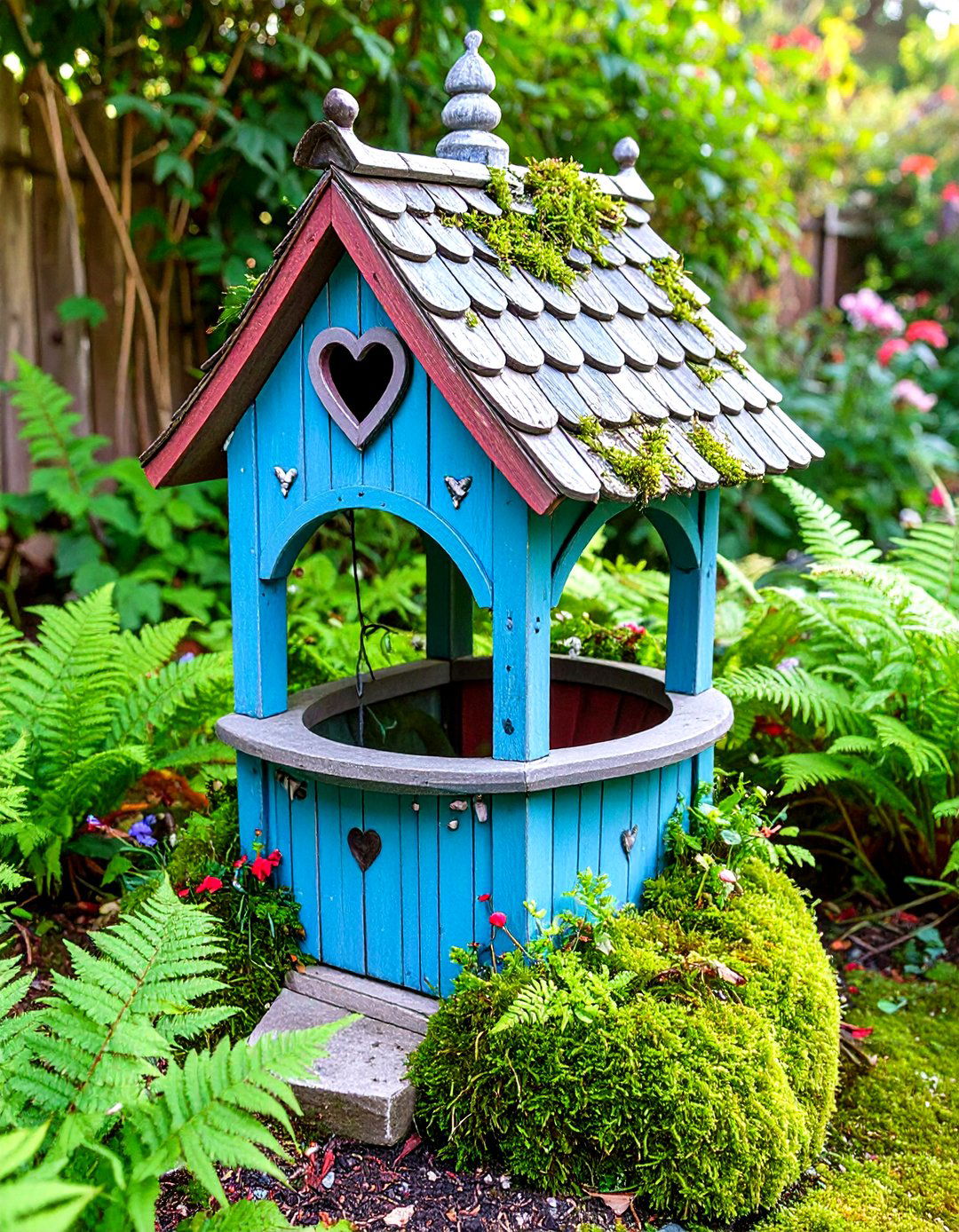
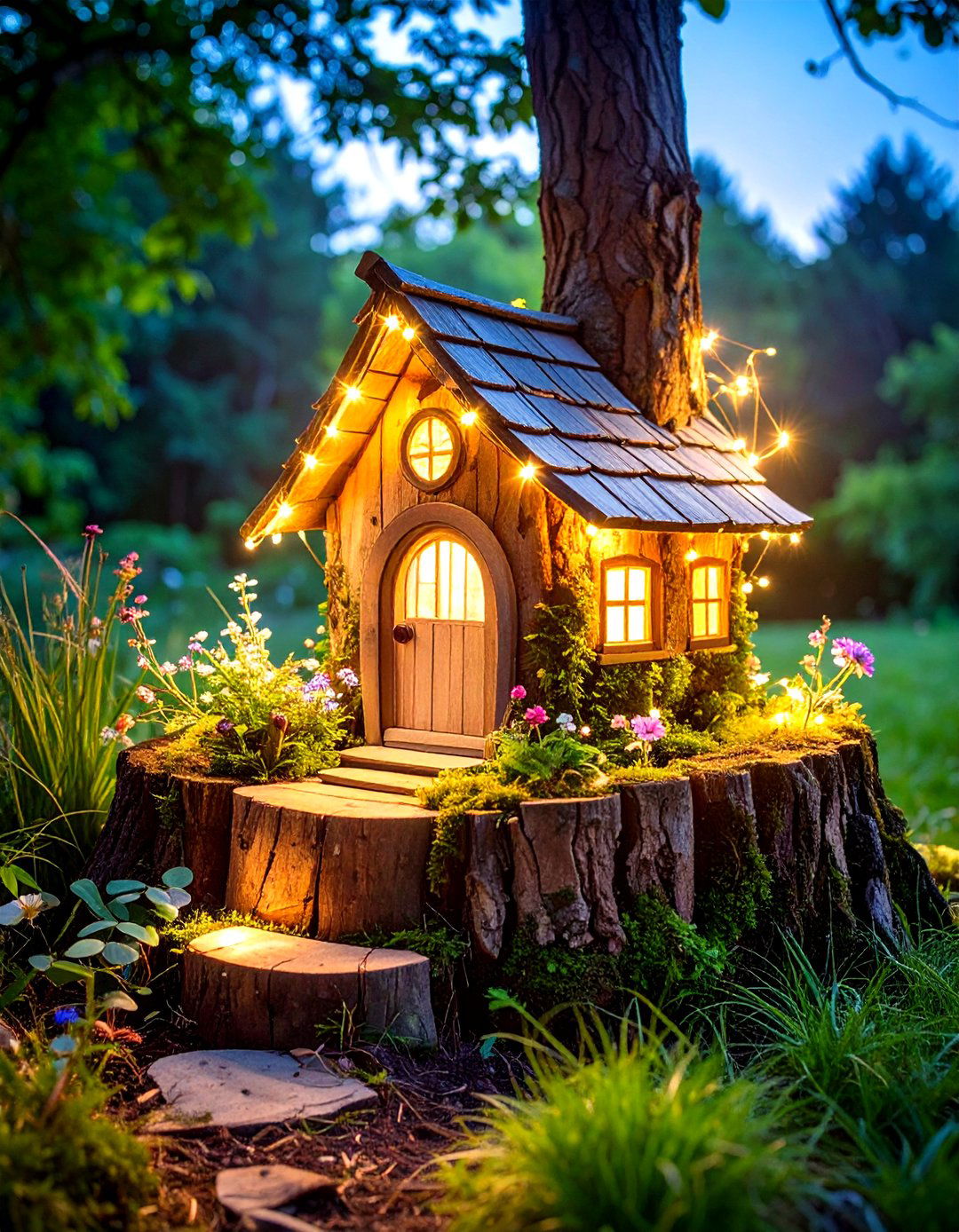
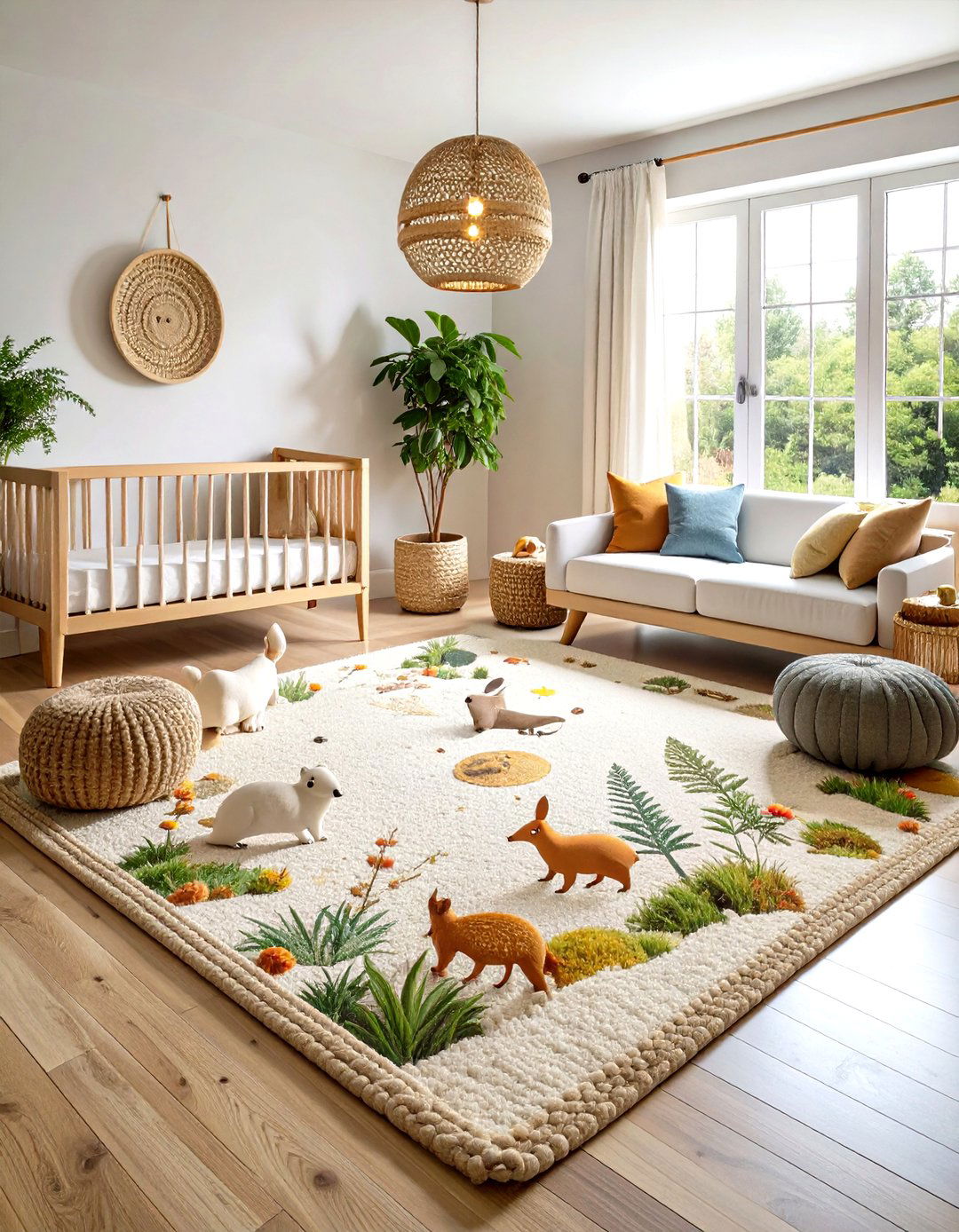
Leave a Reply